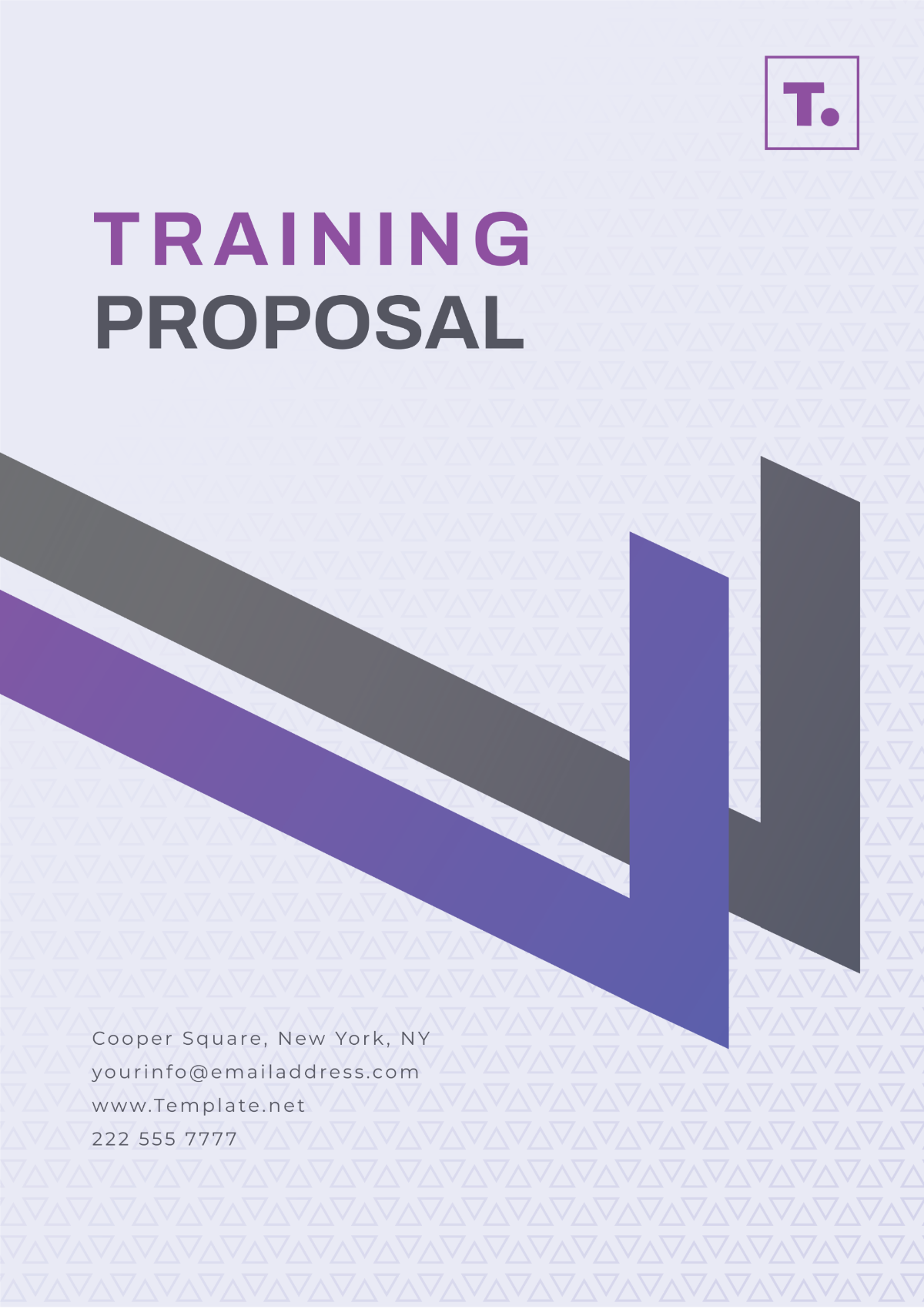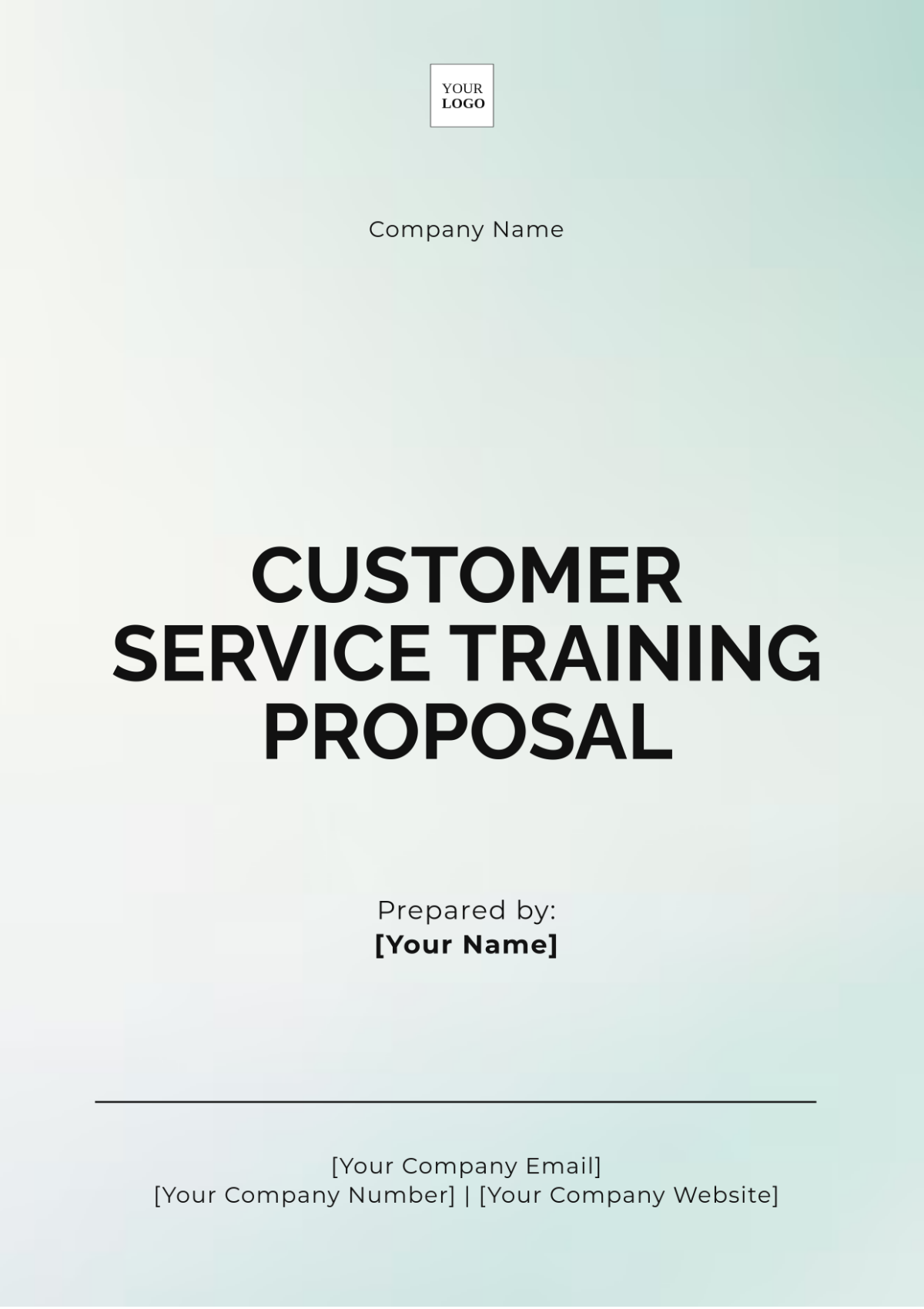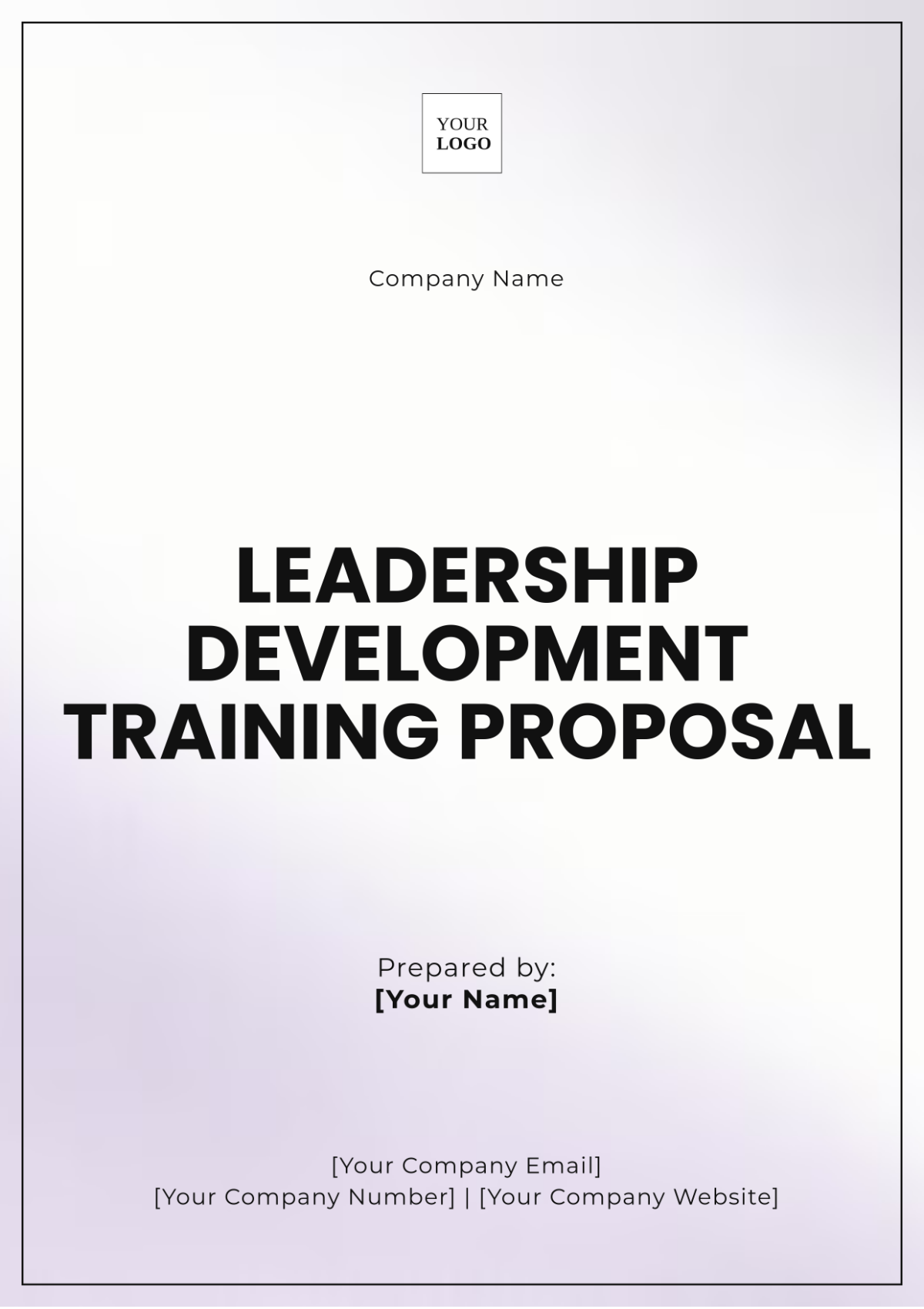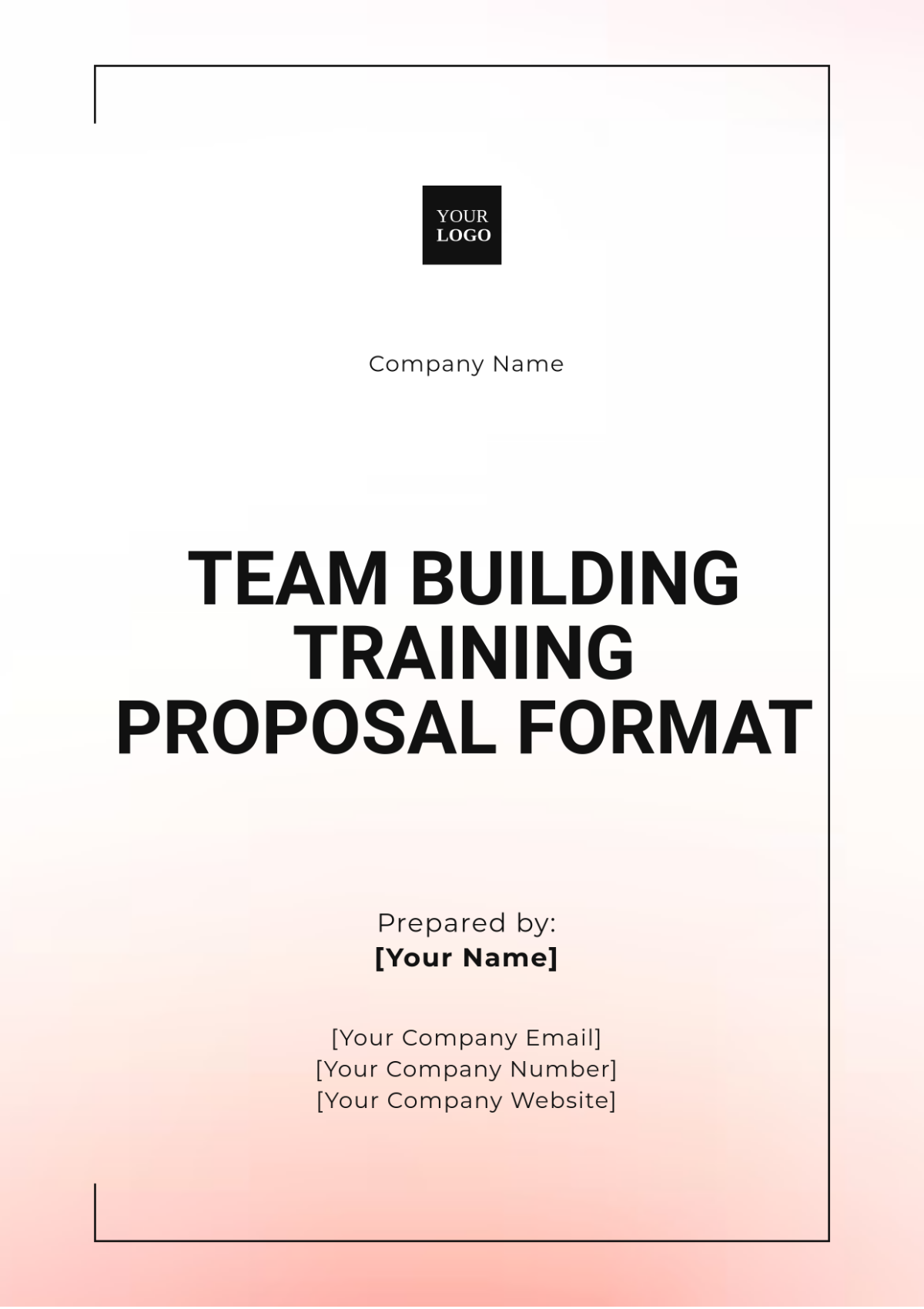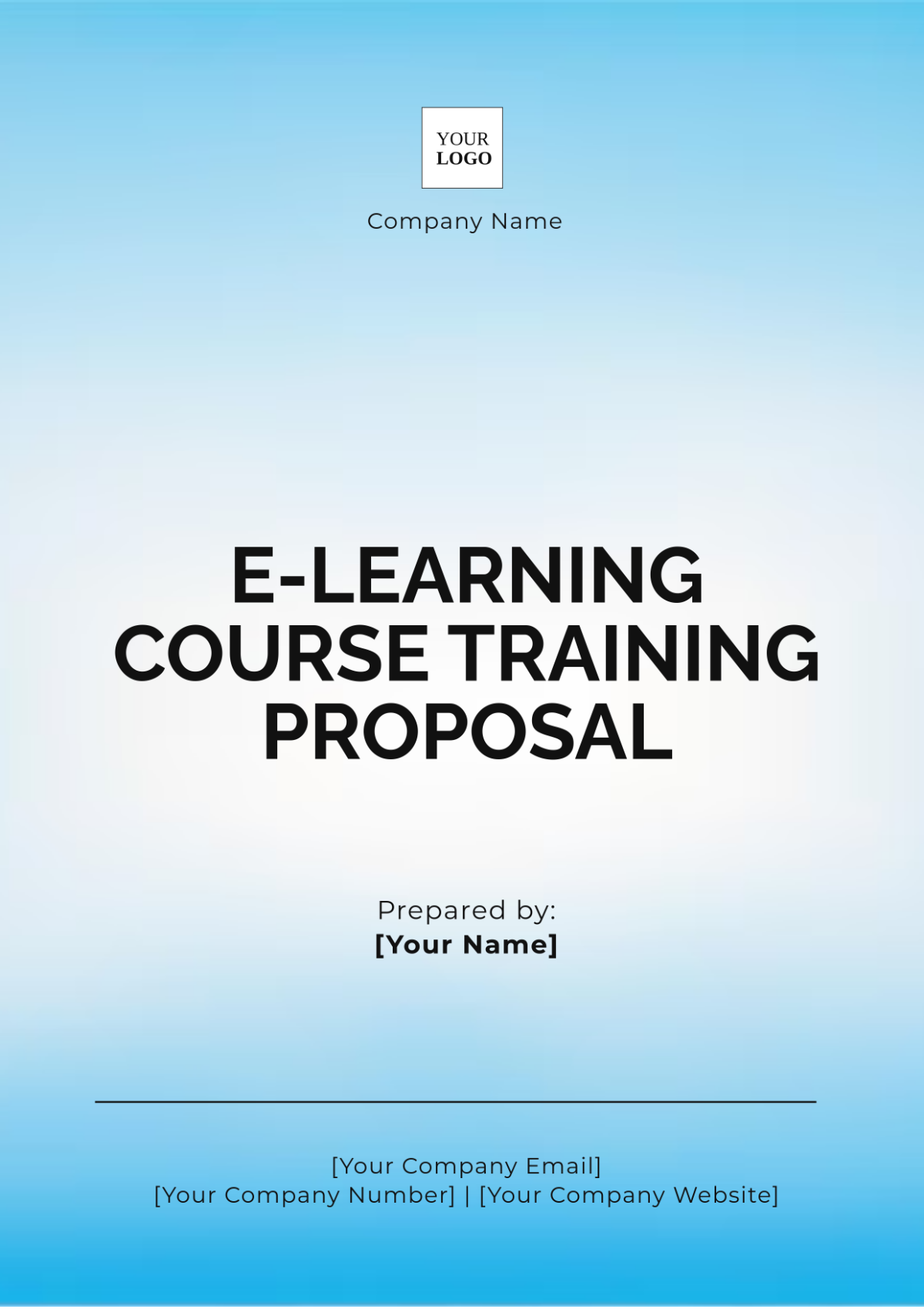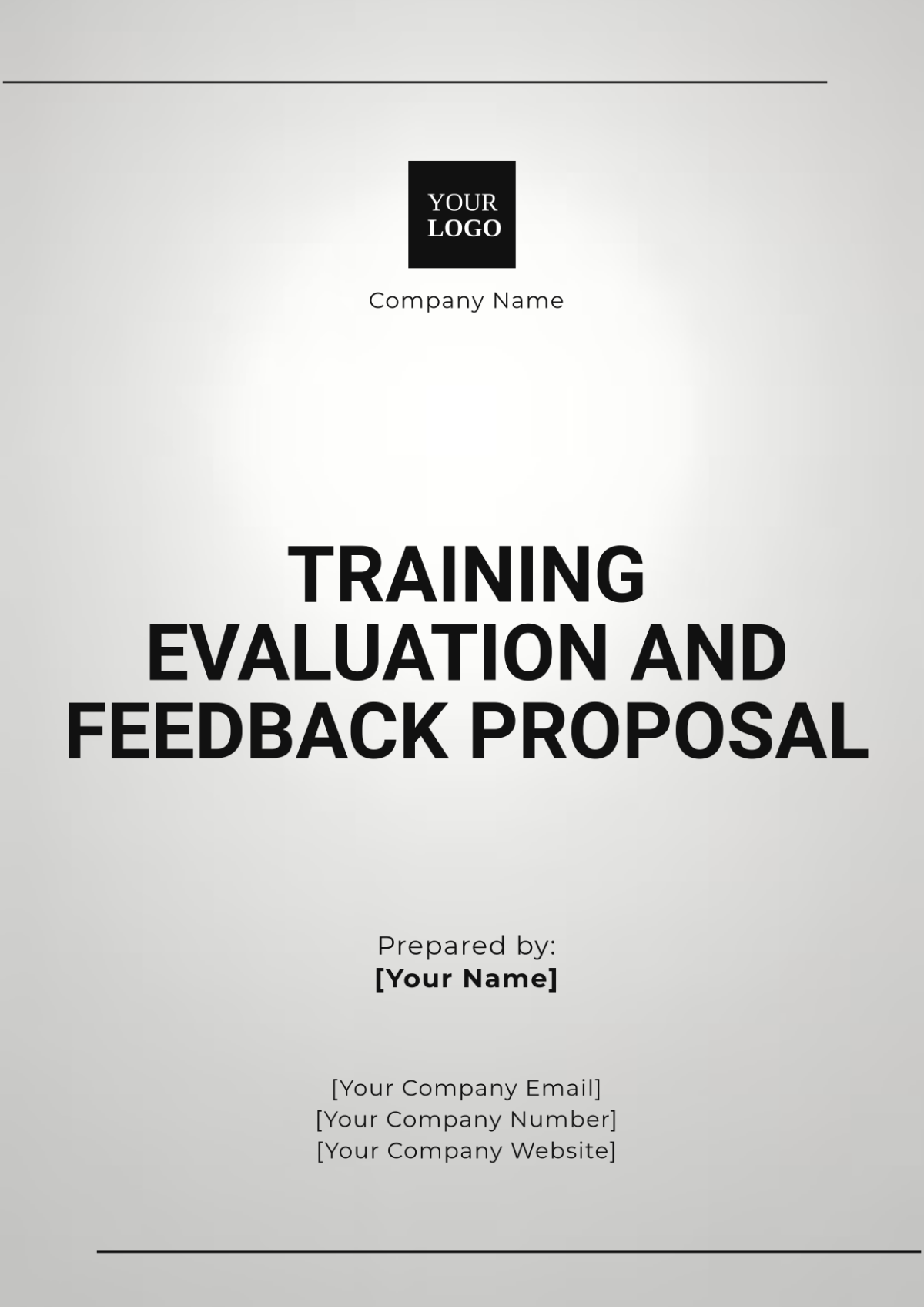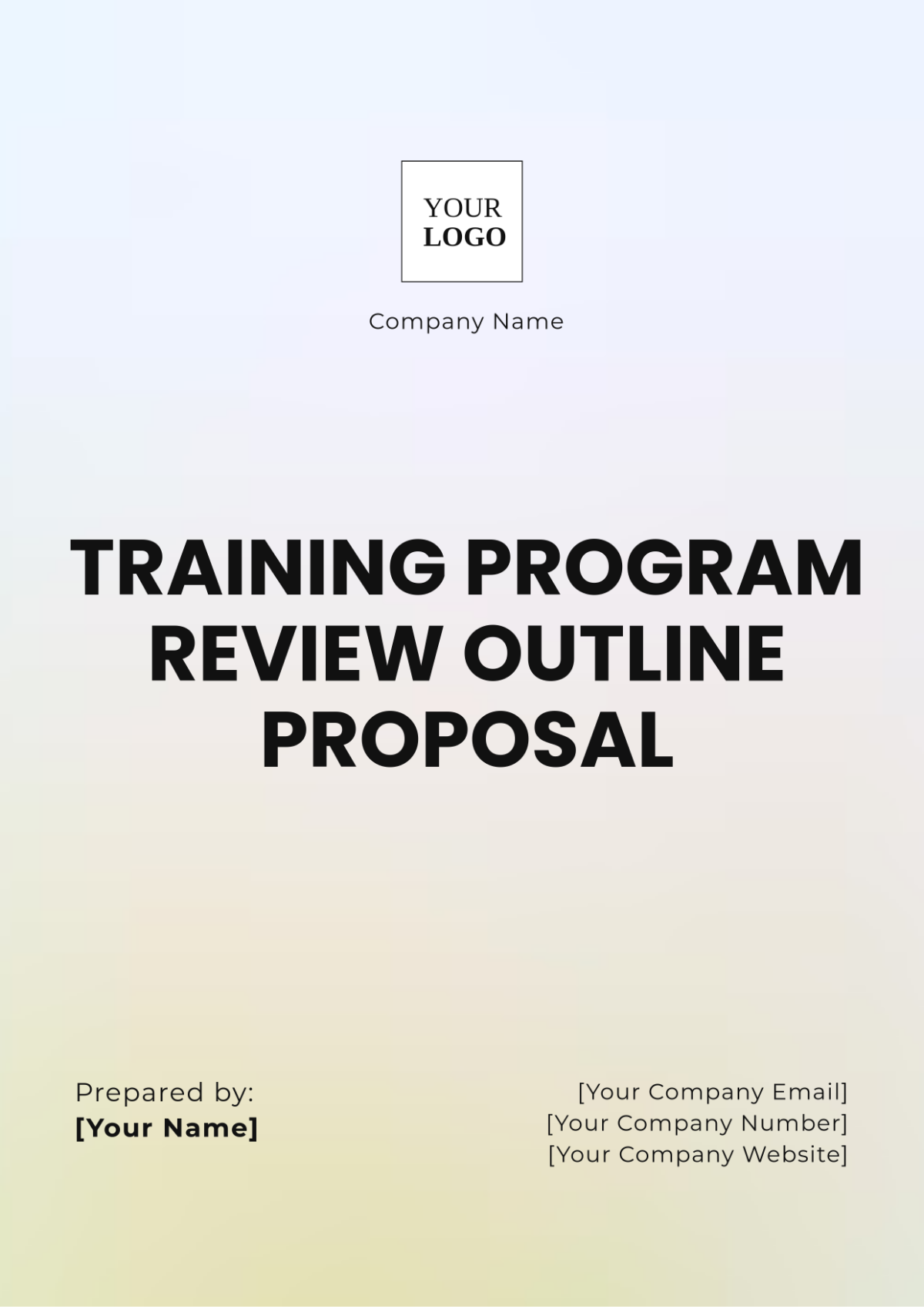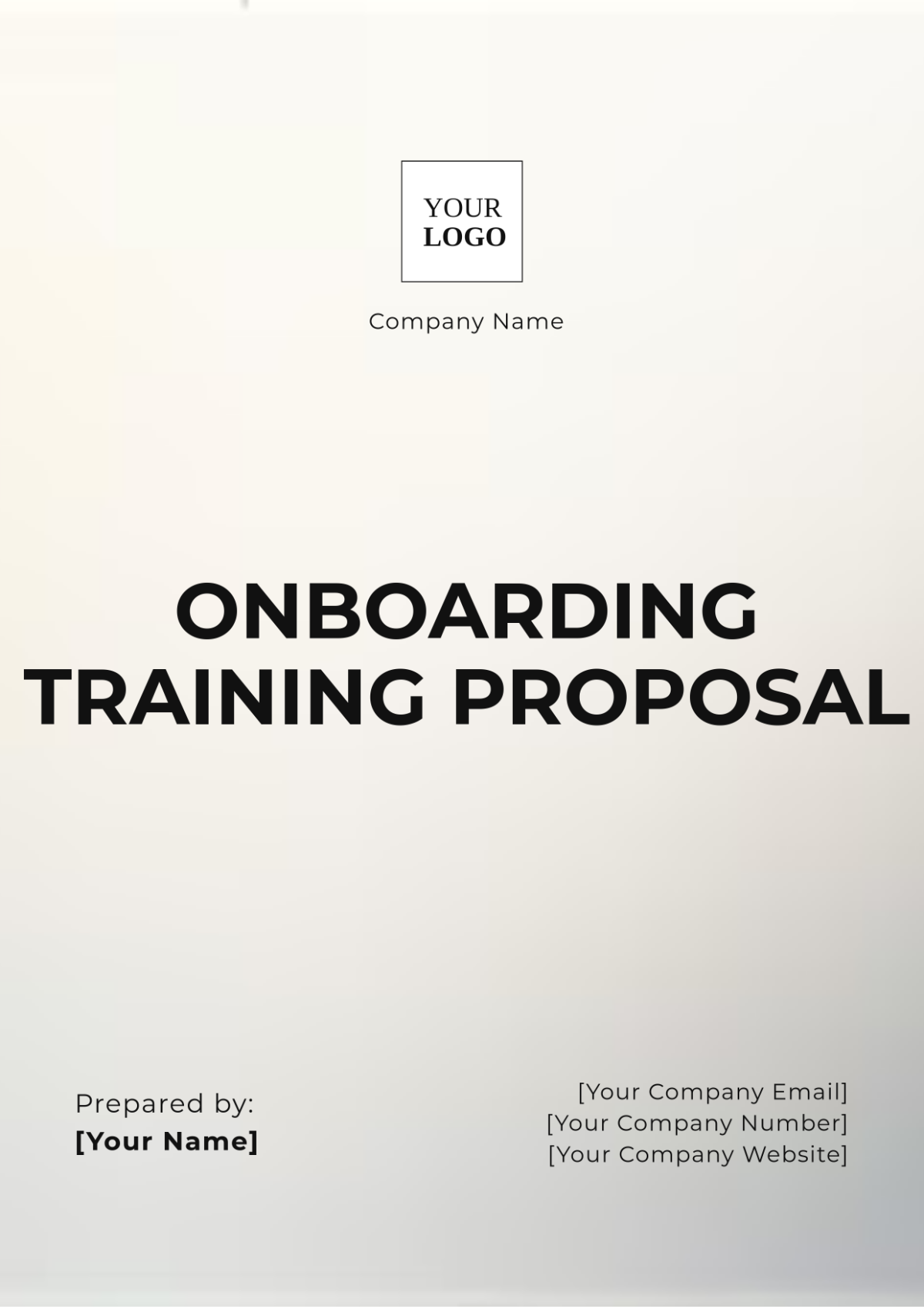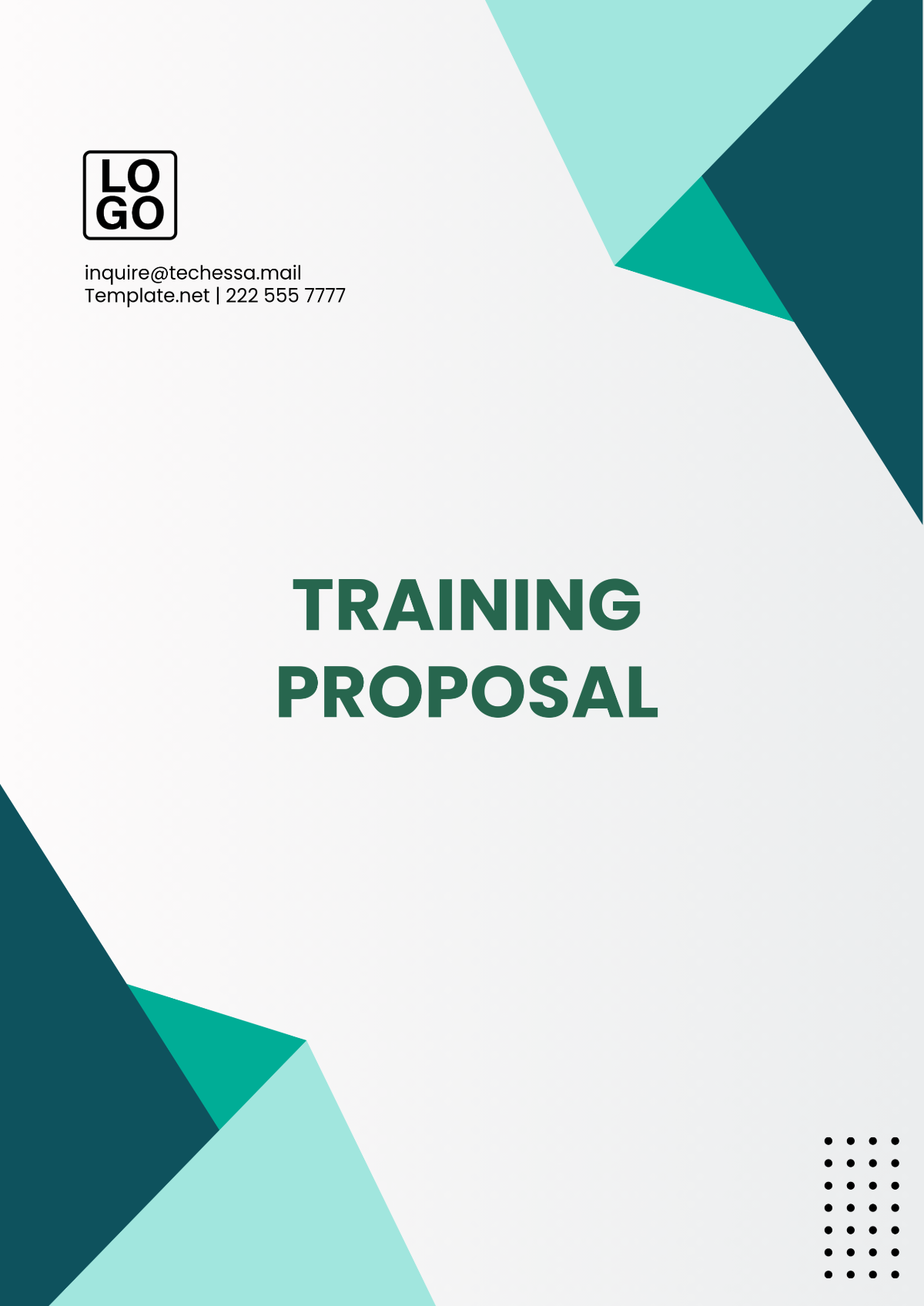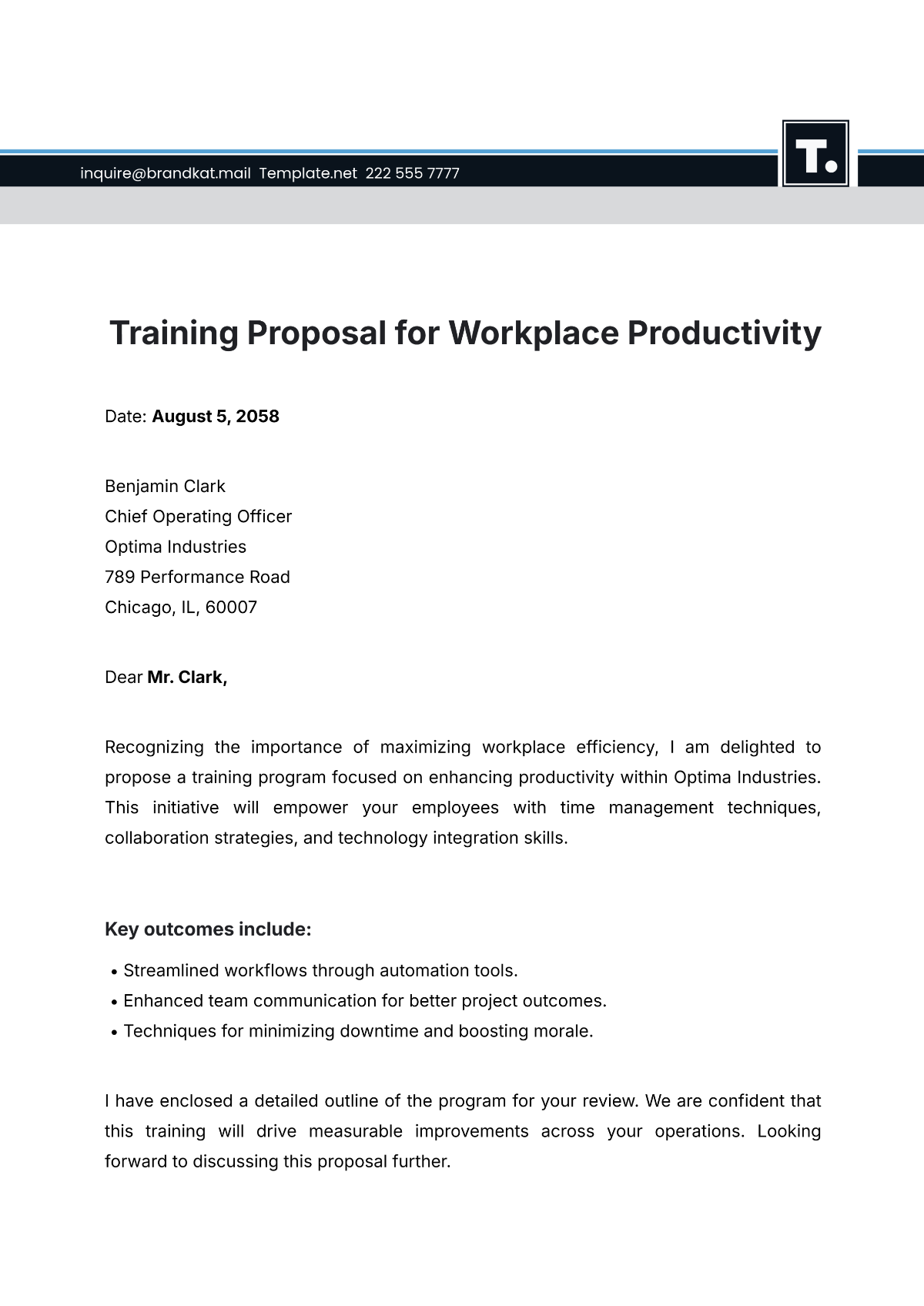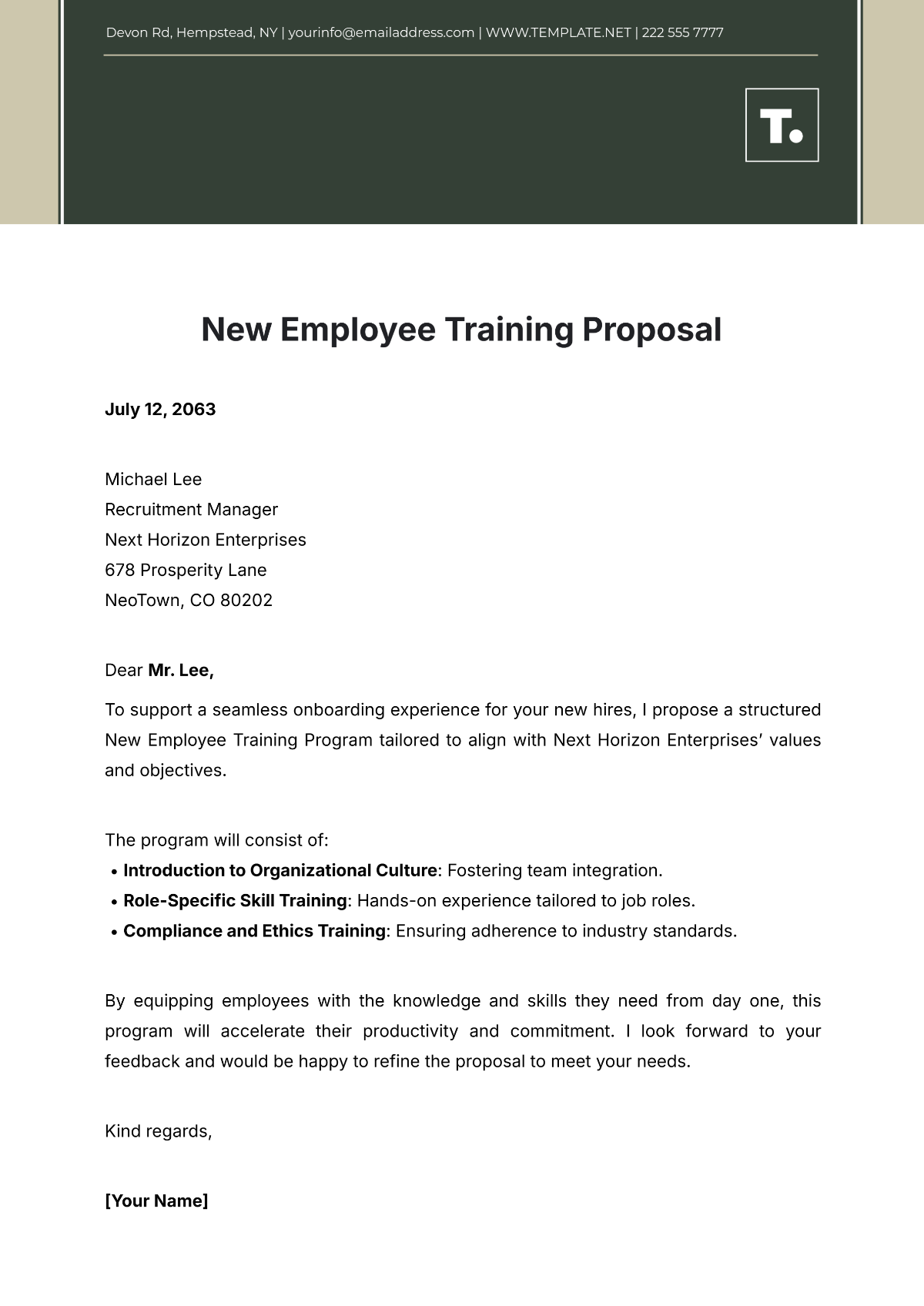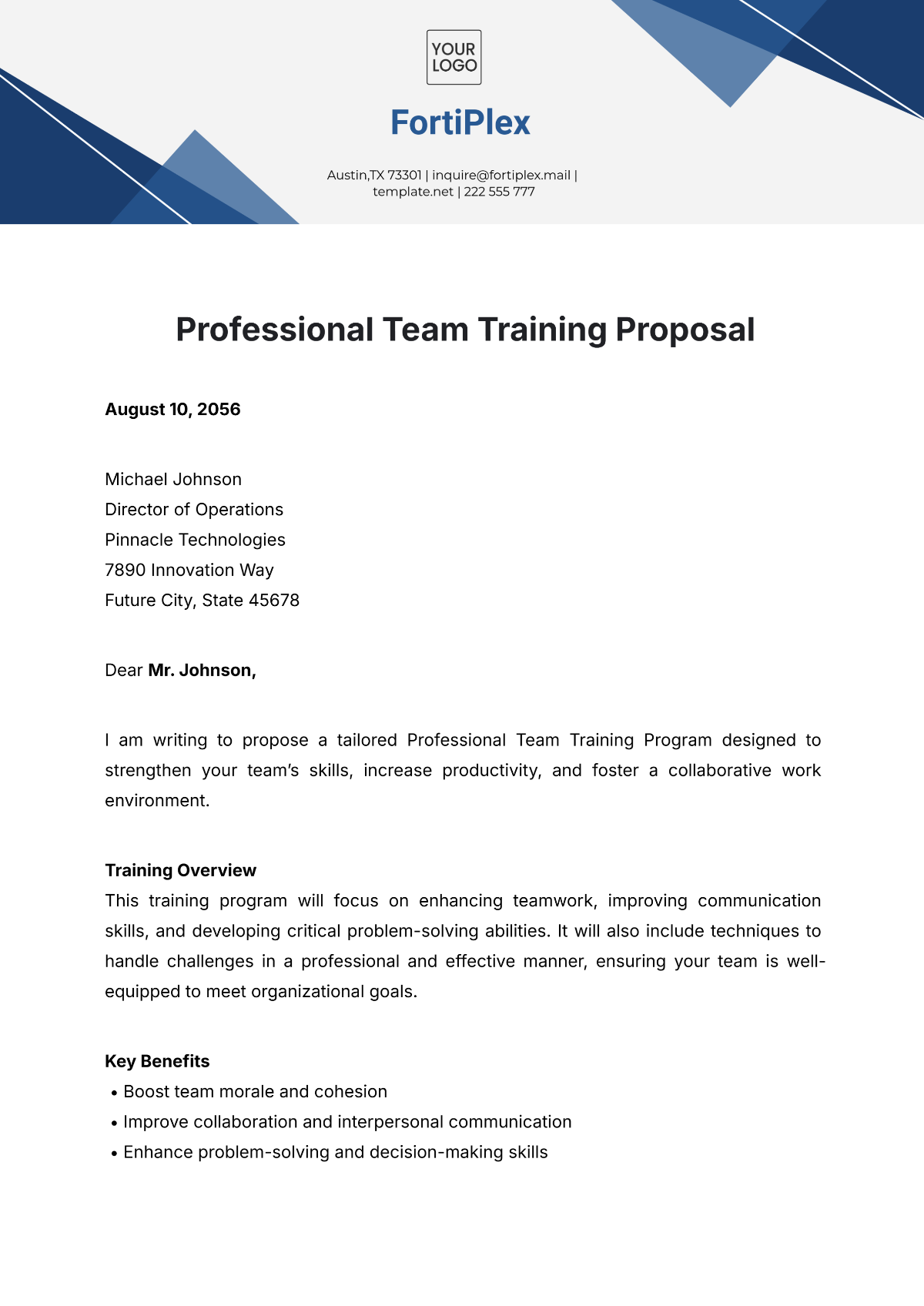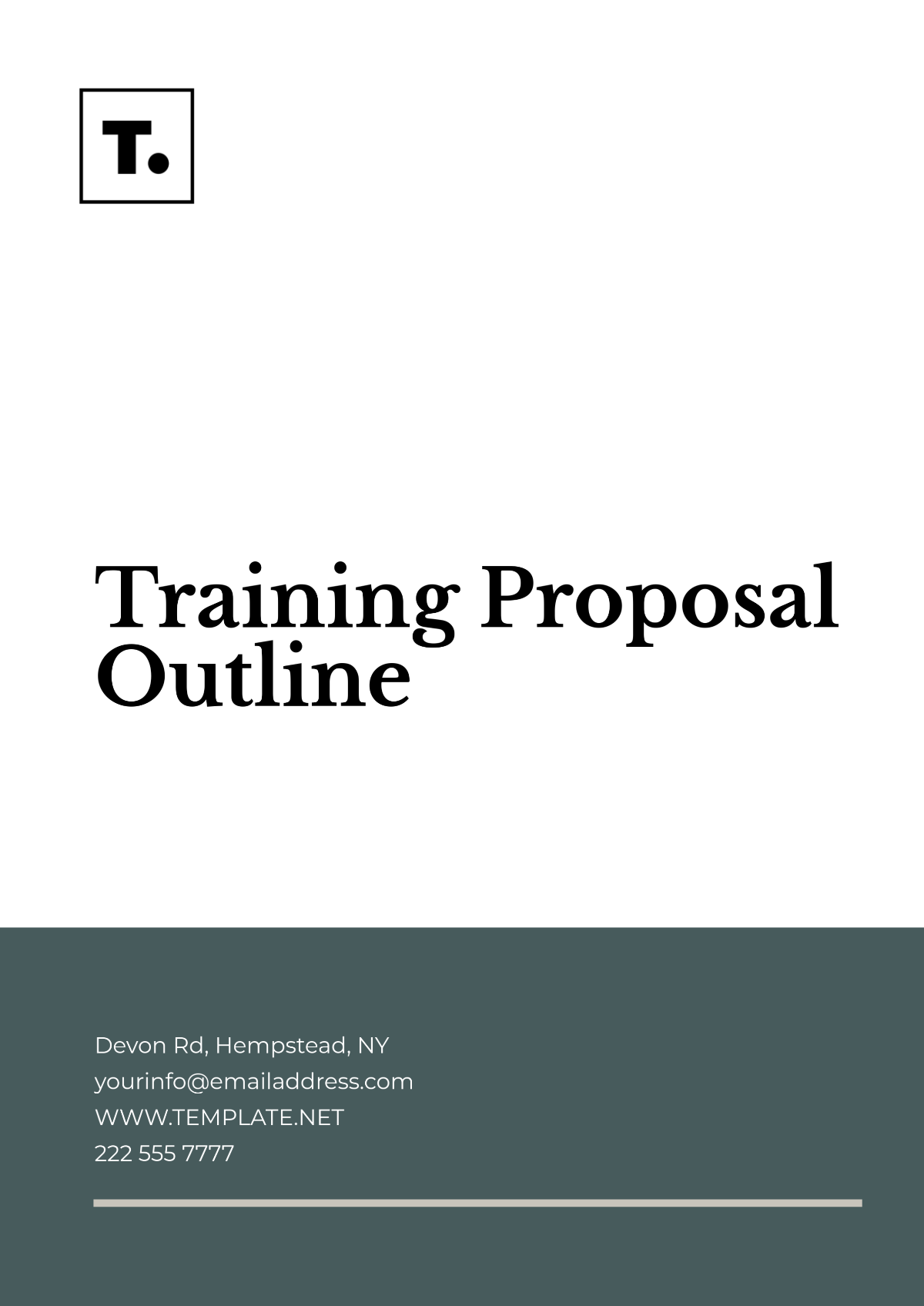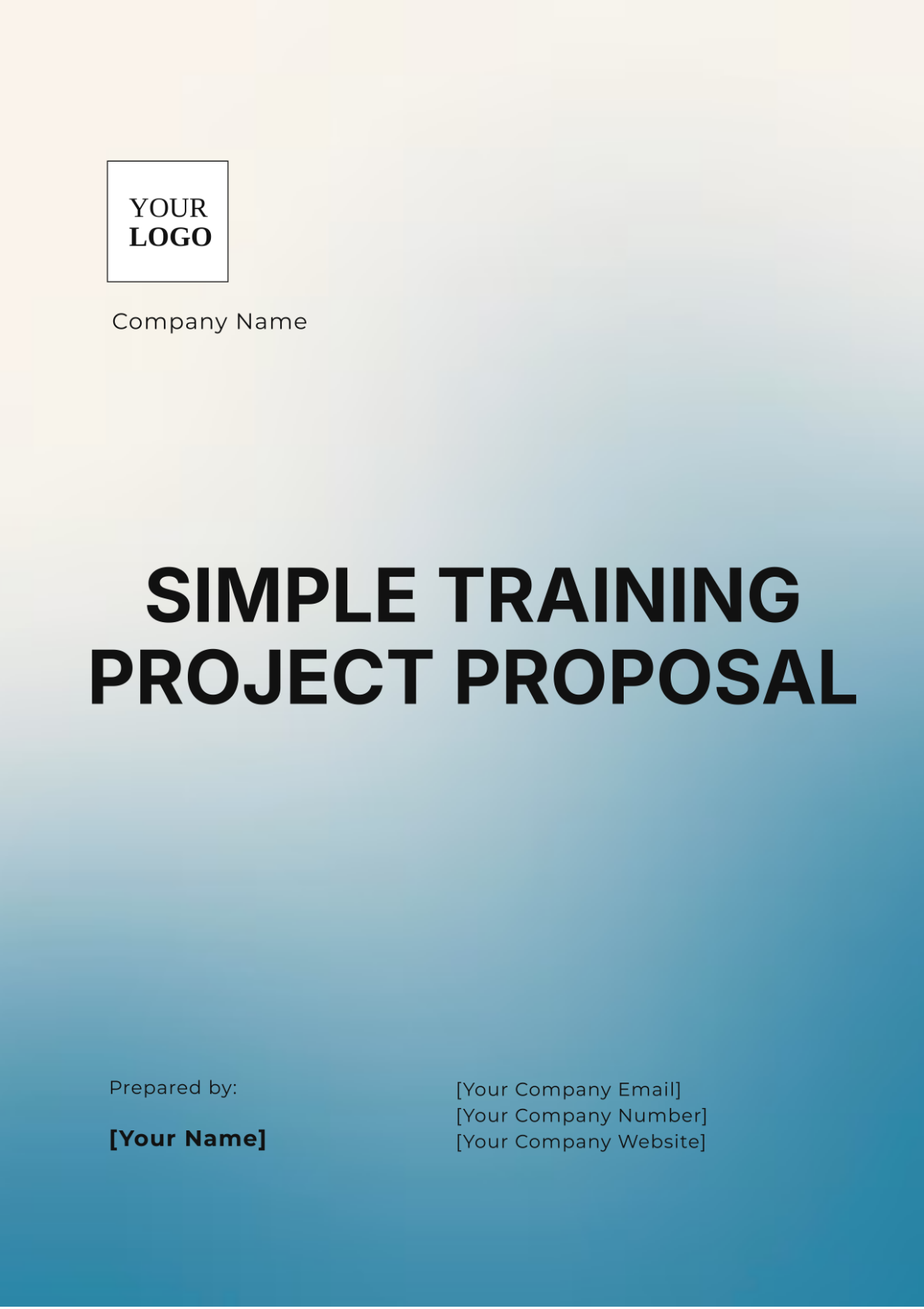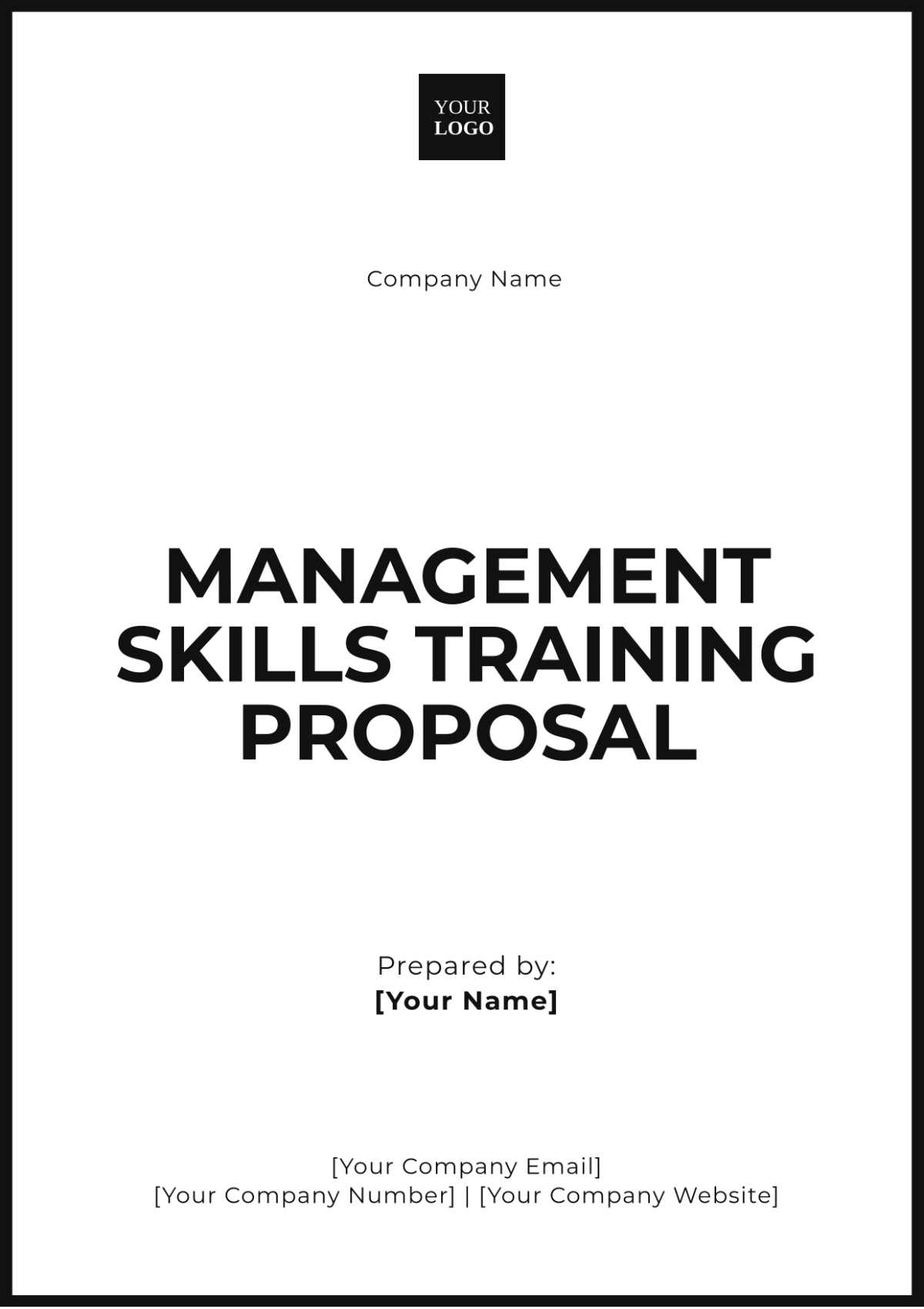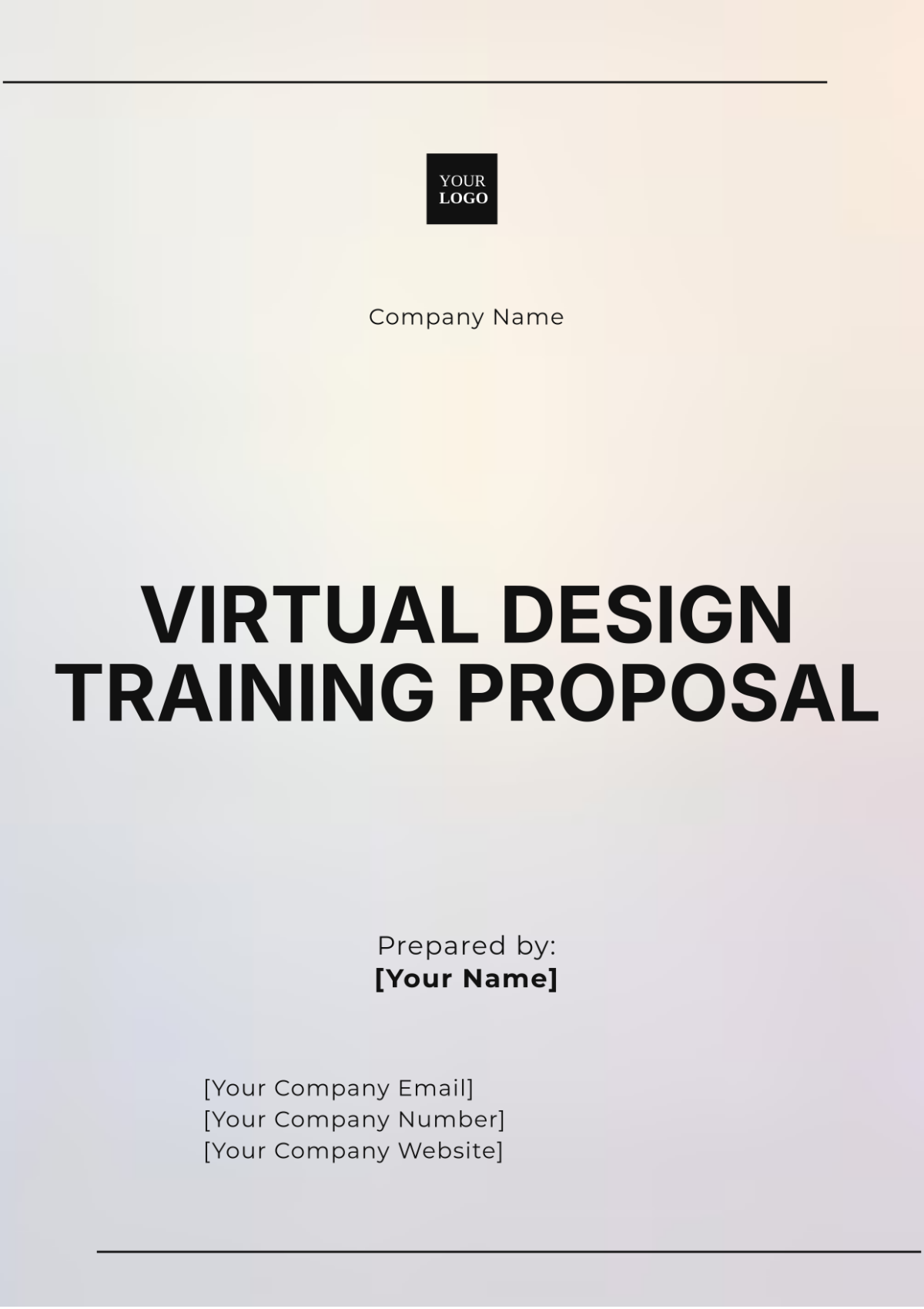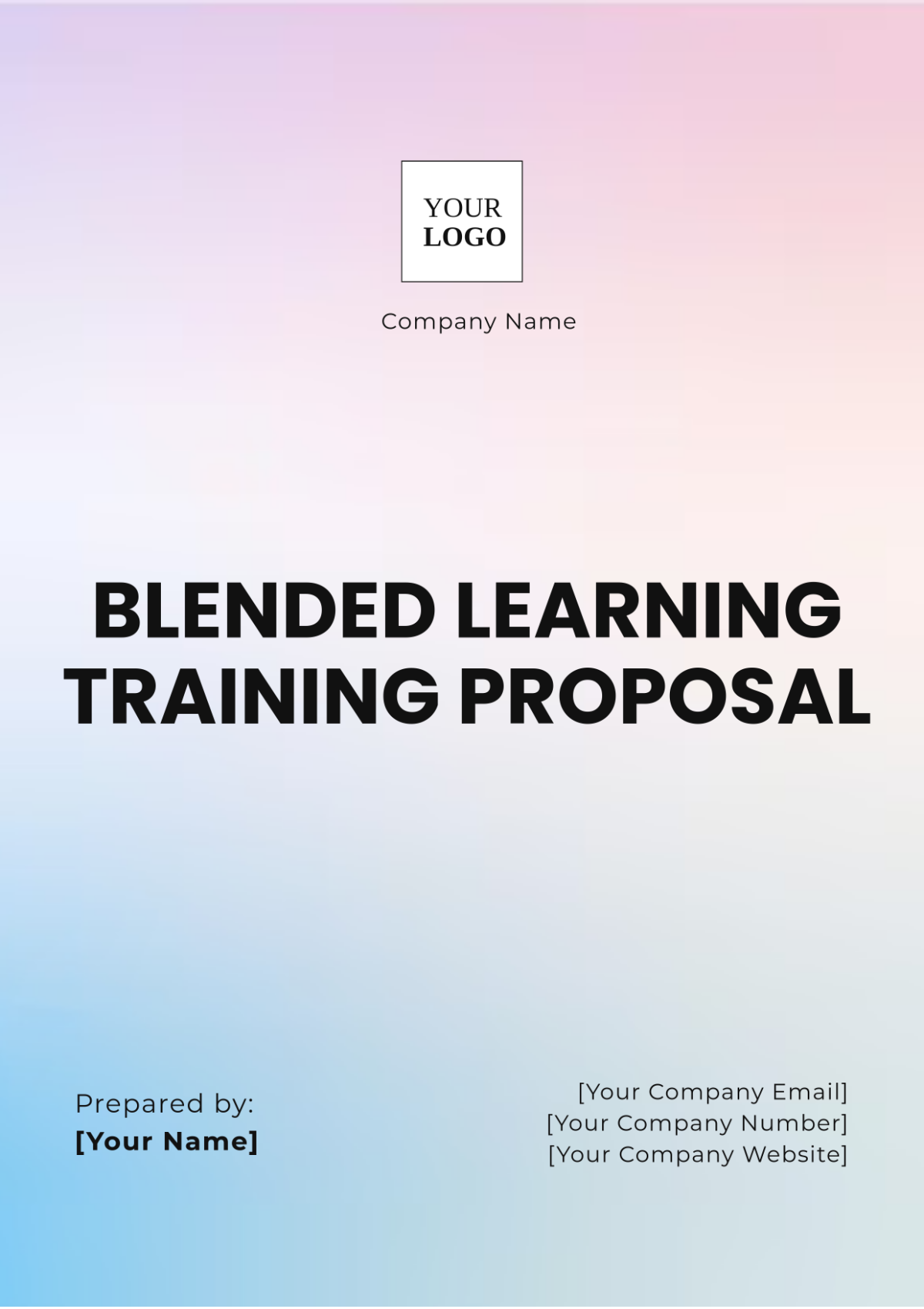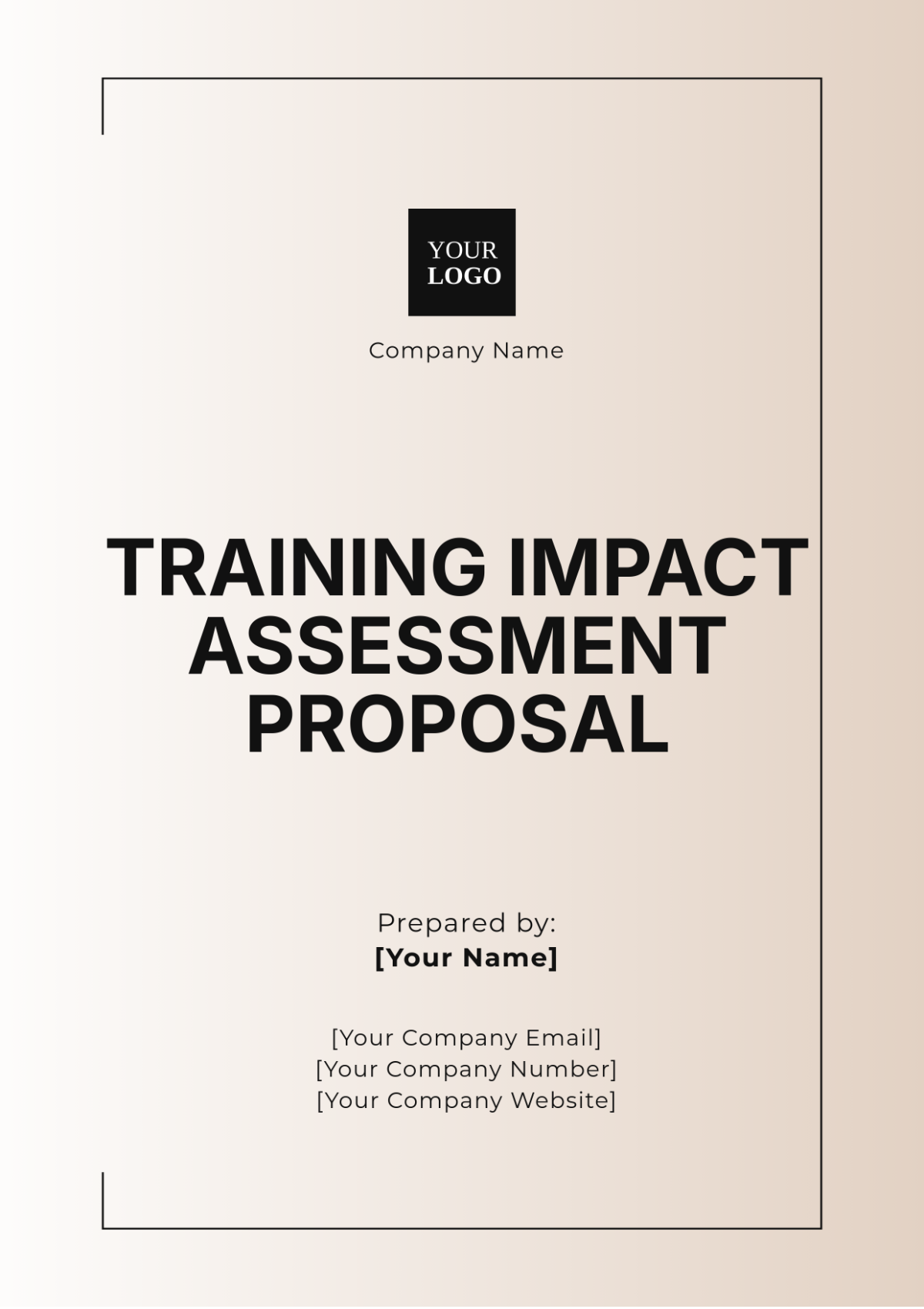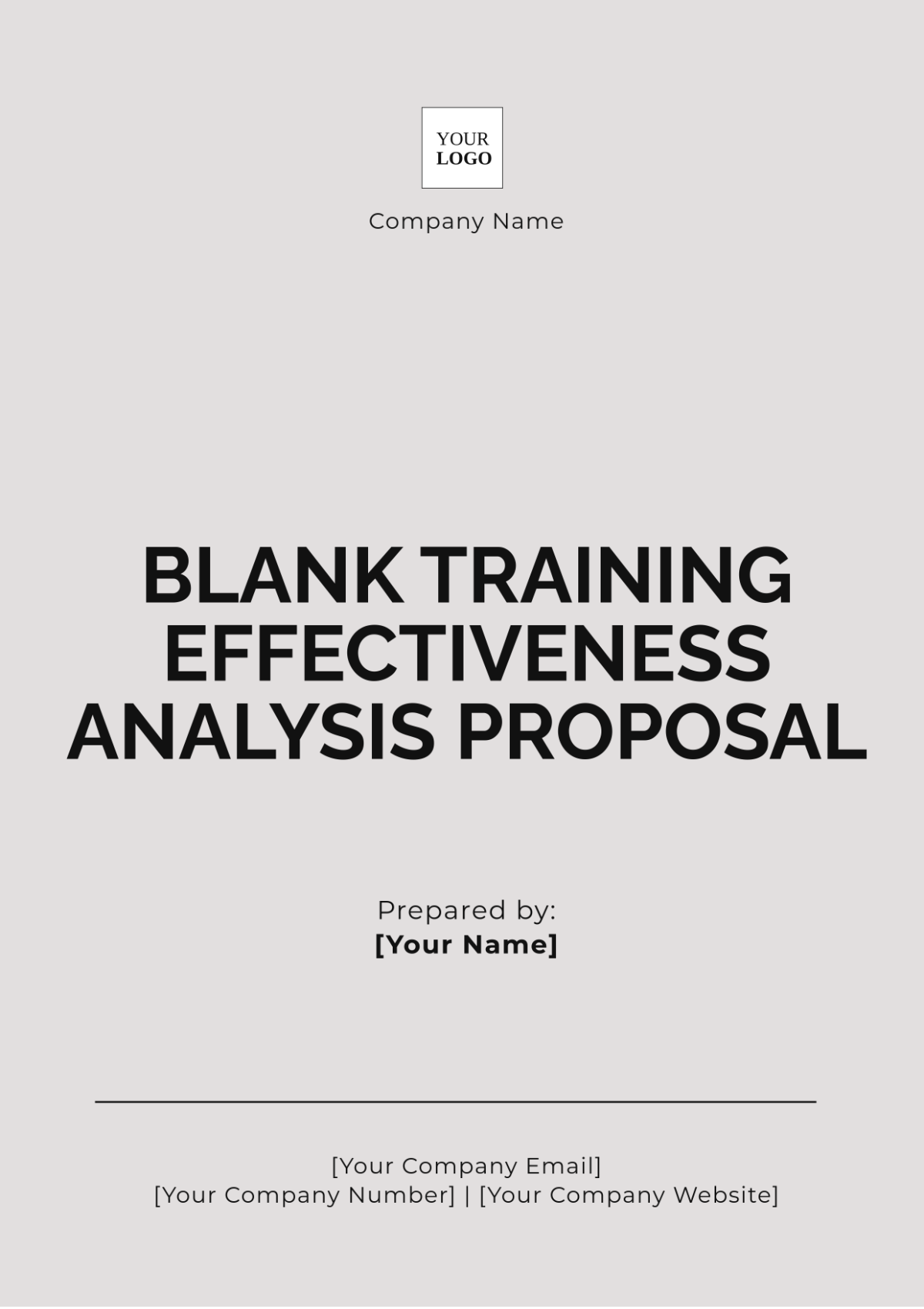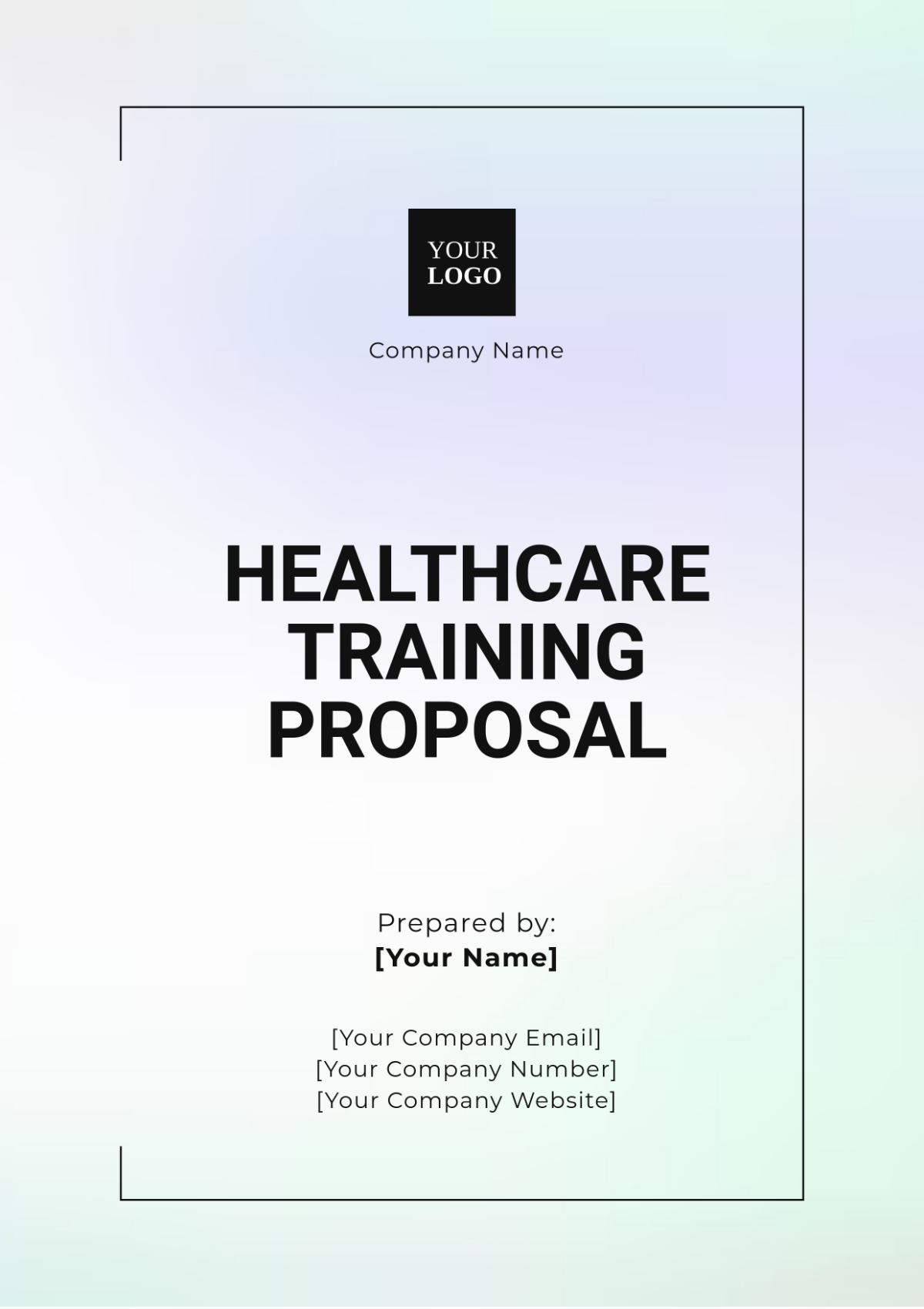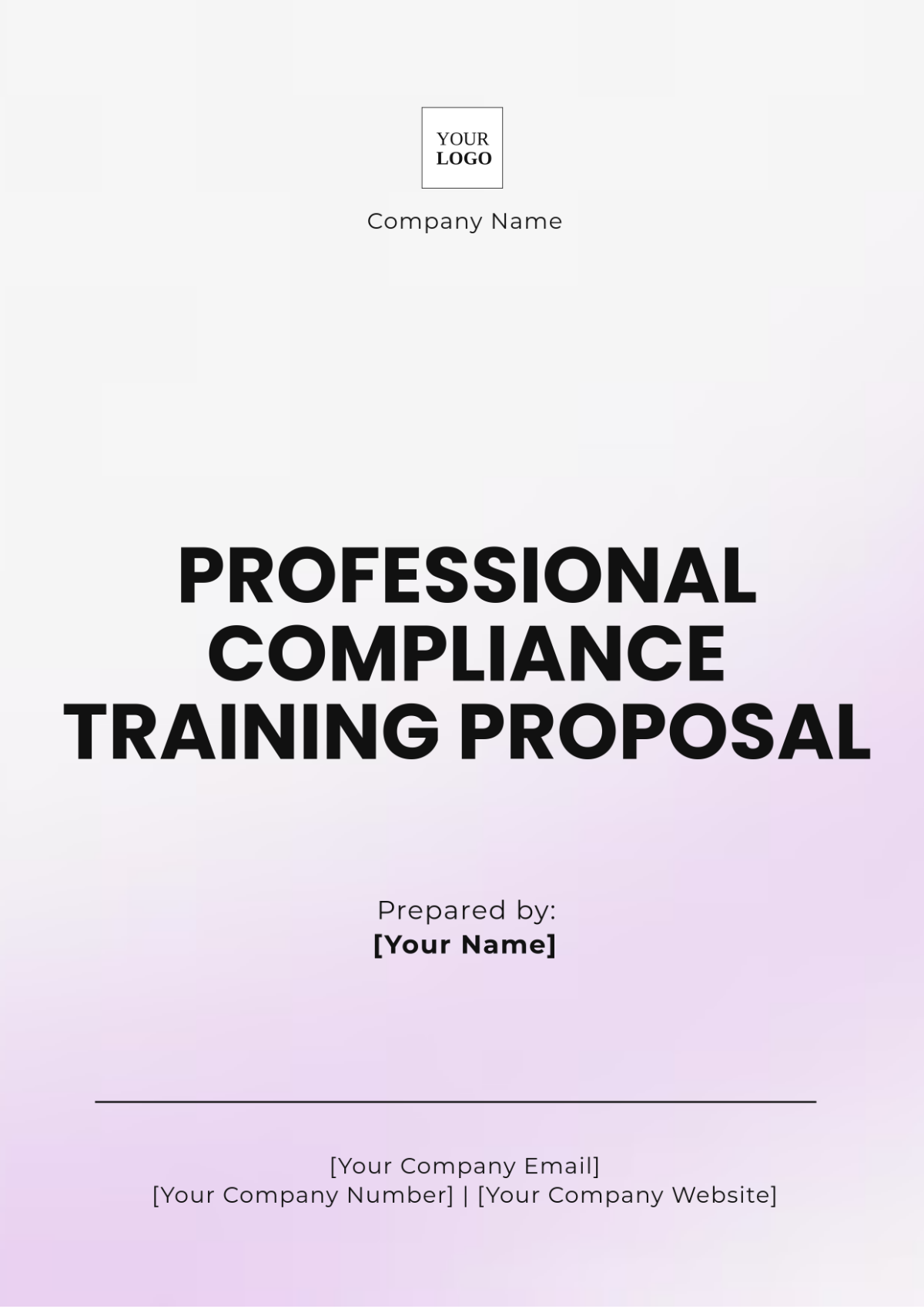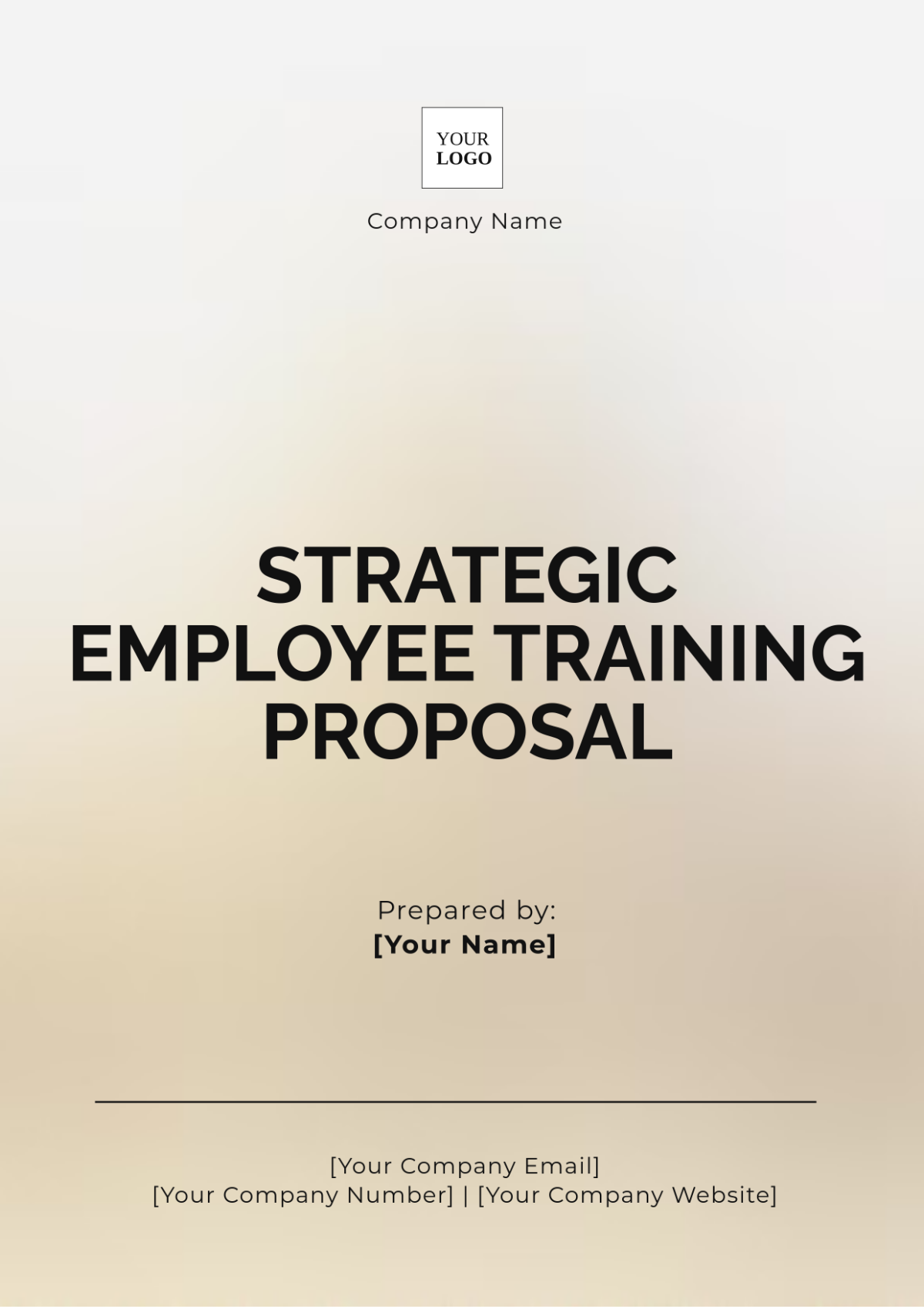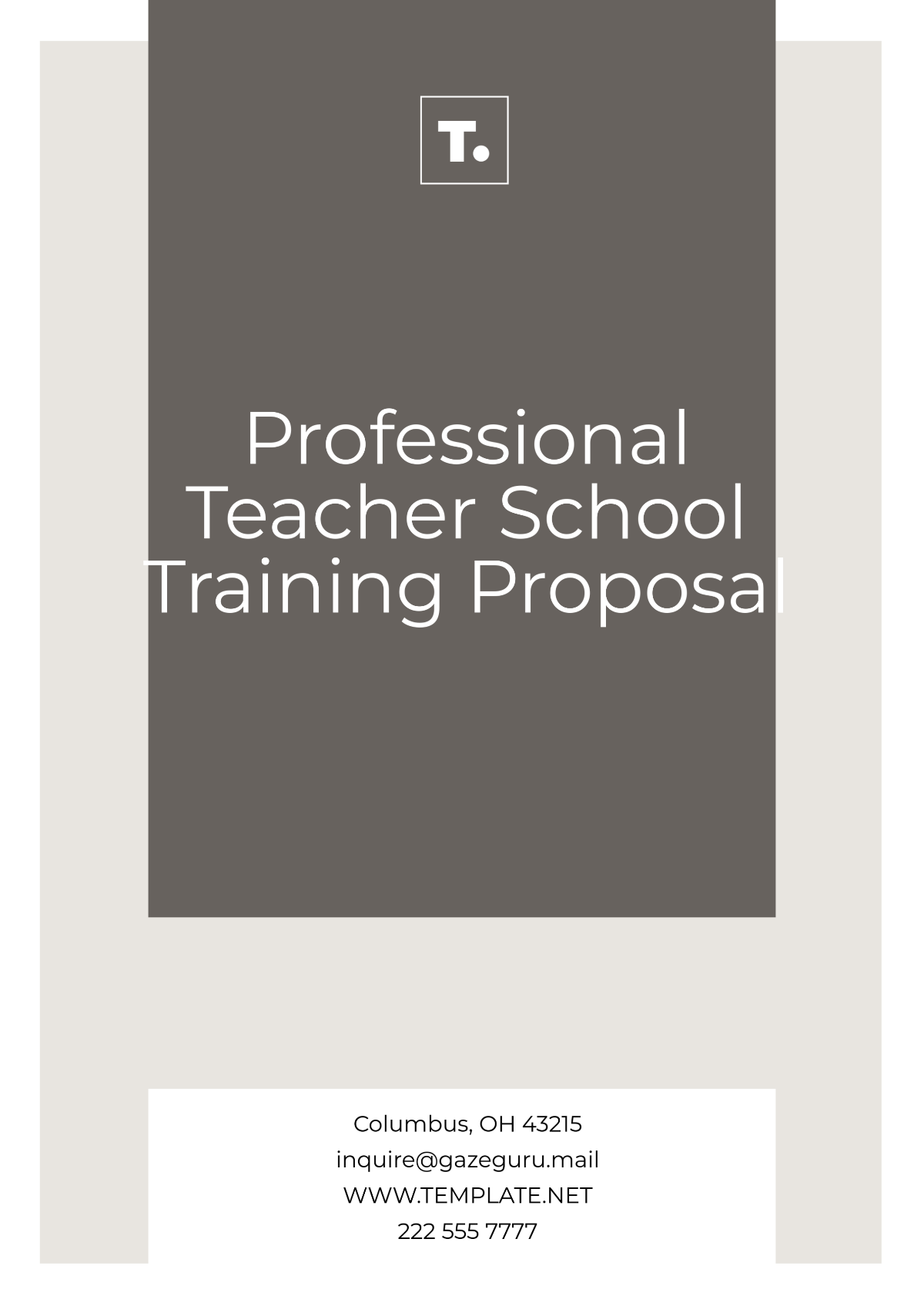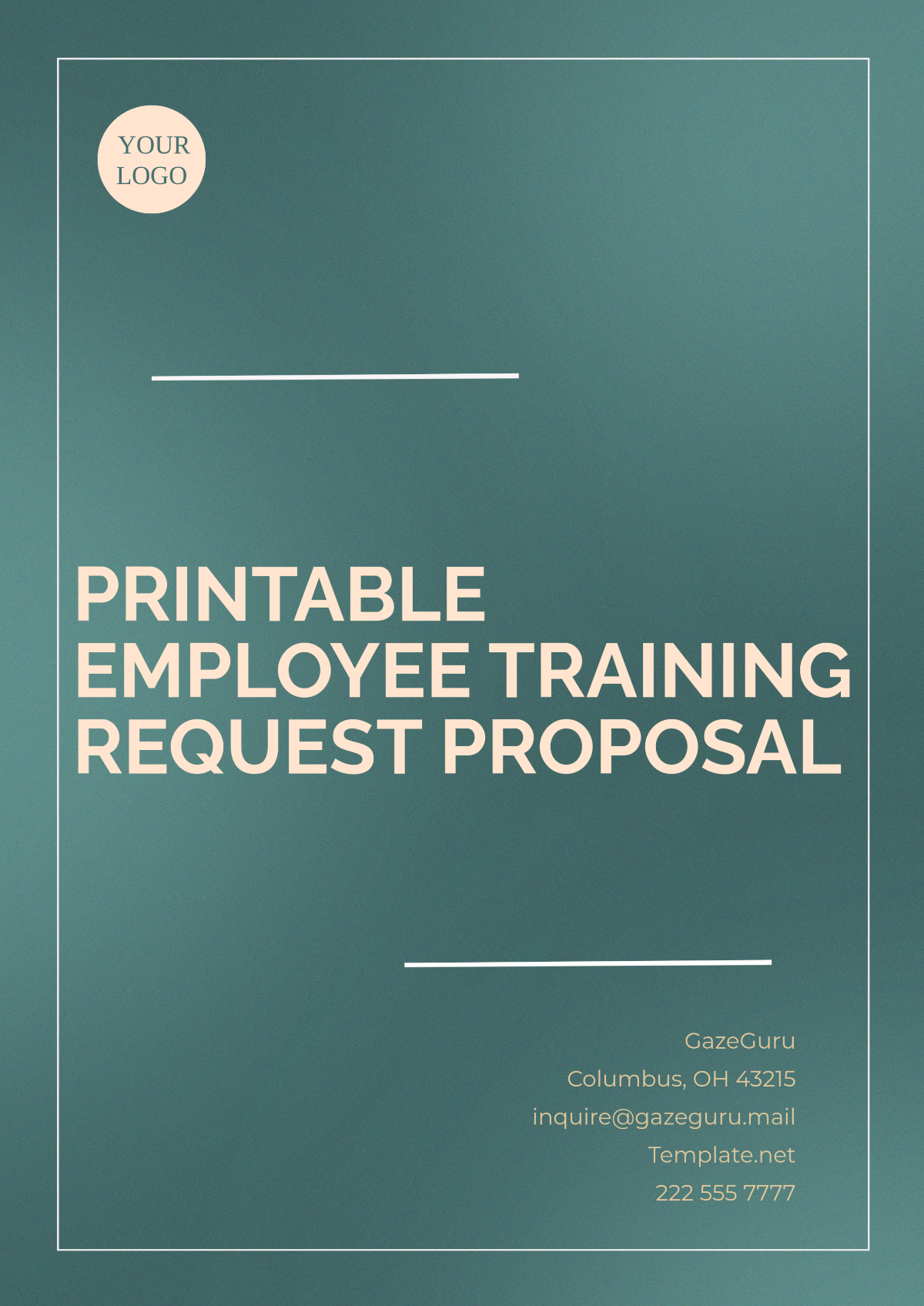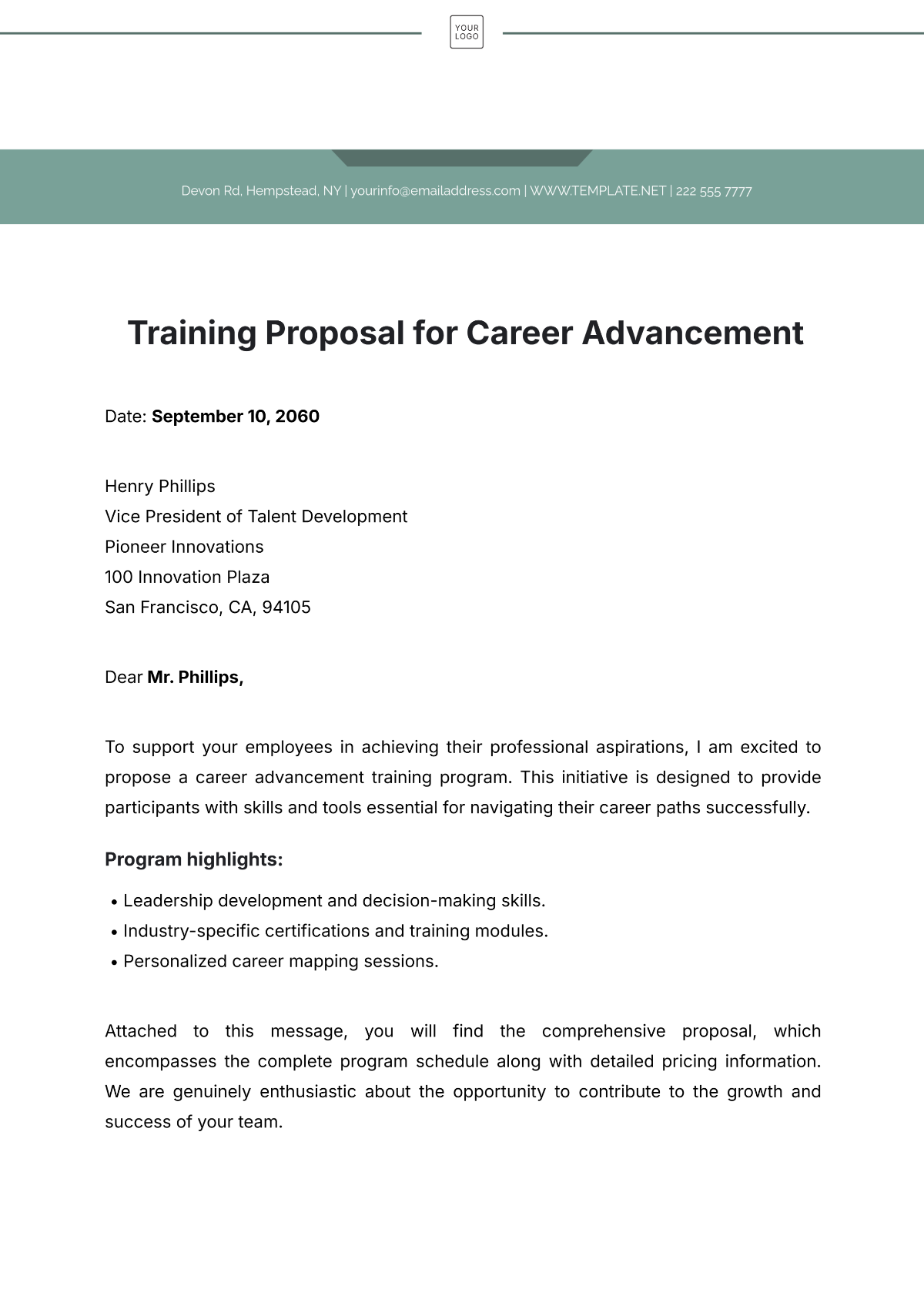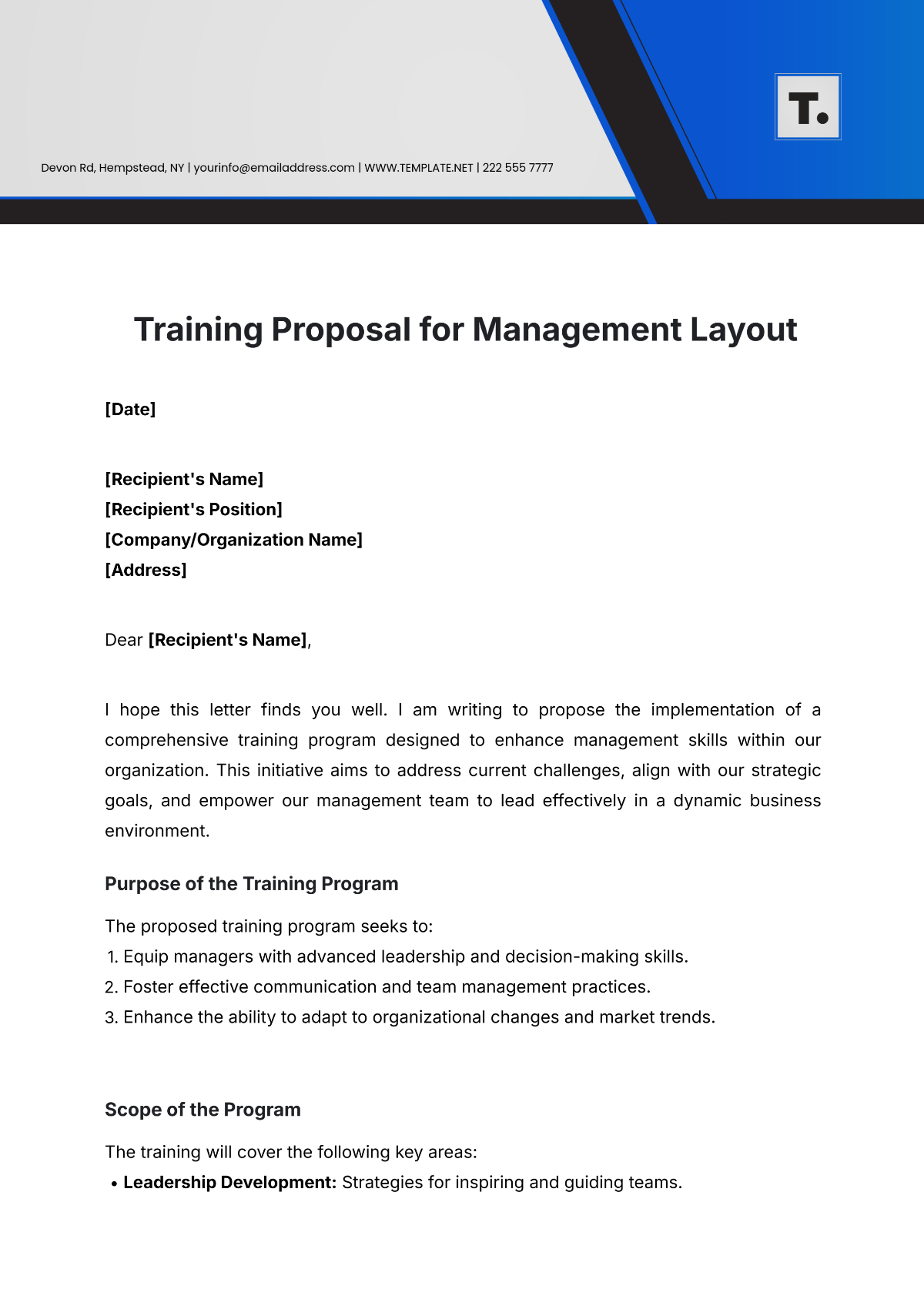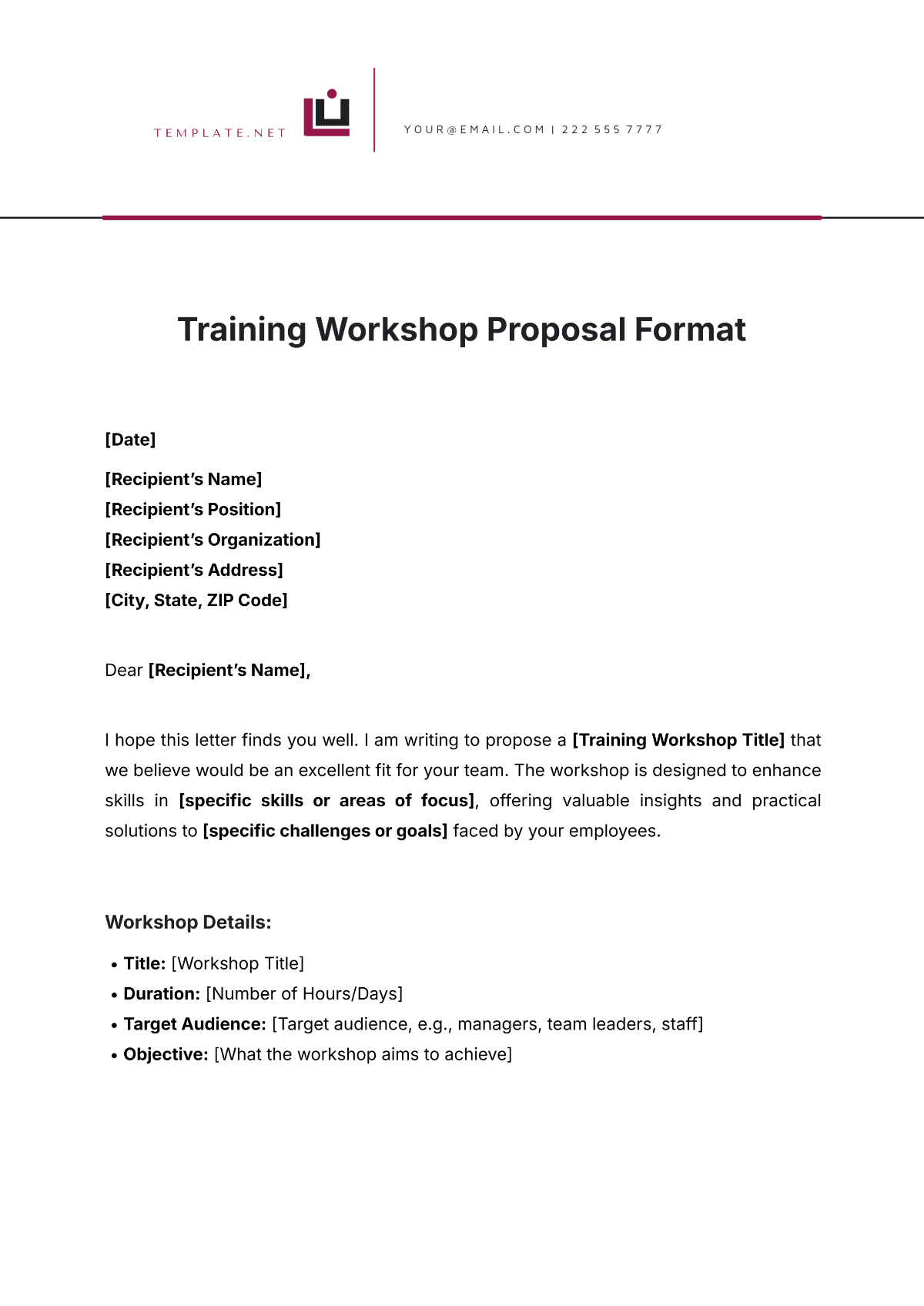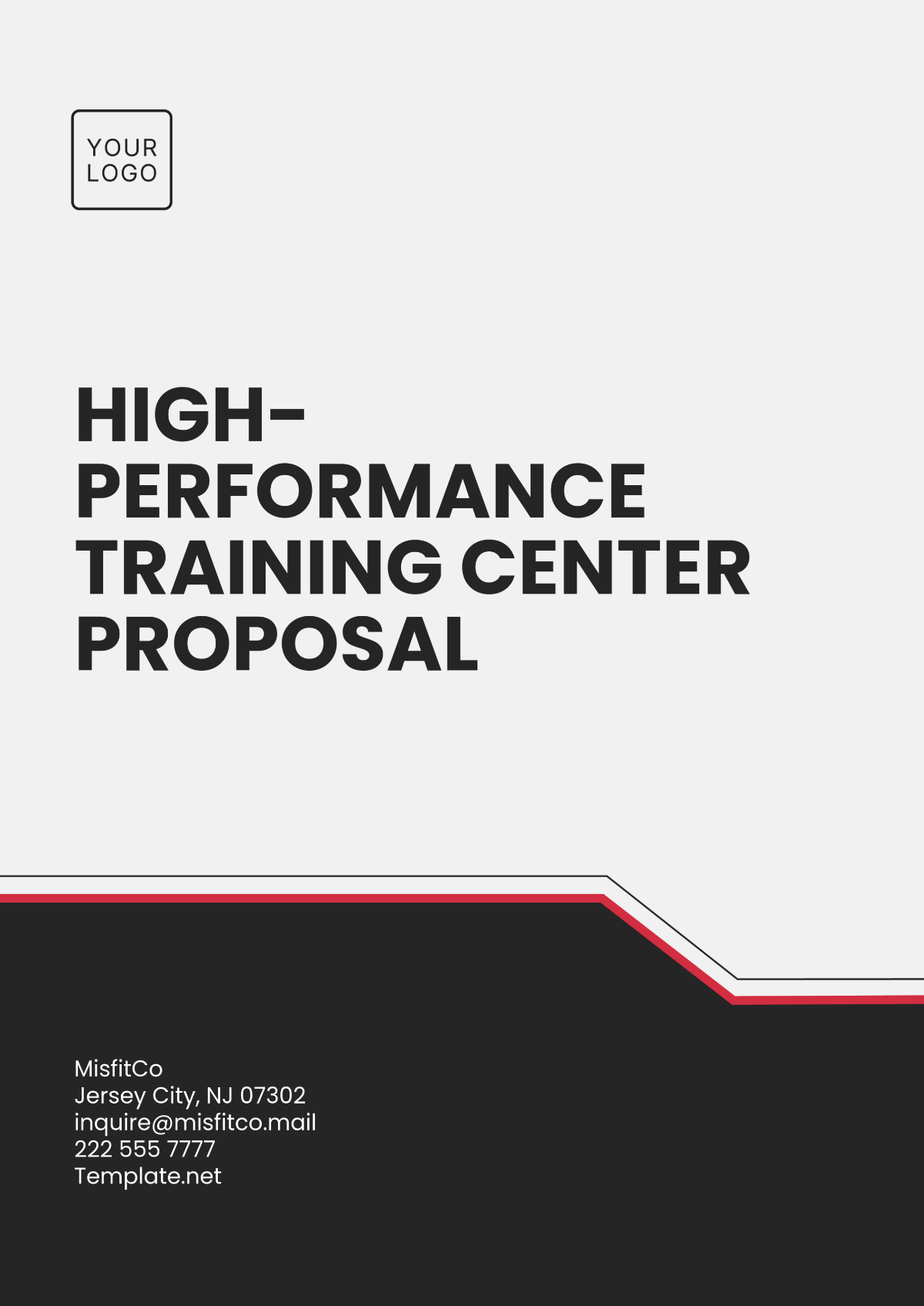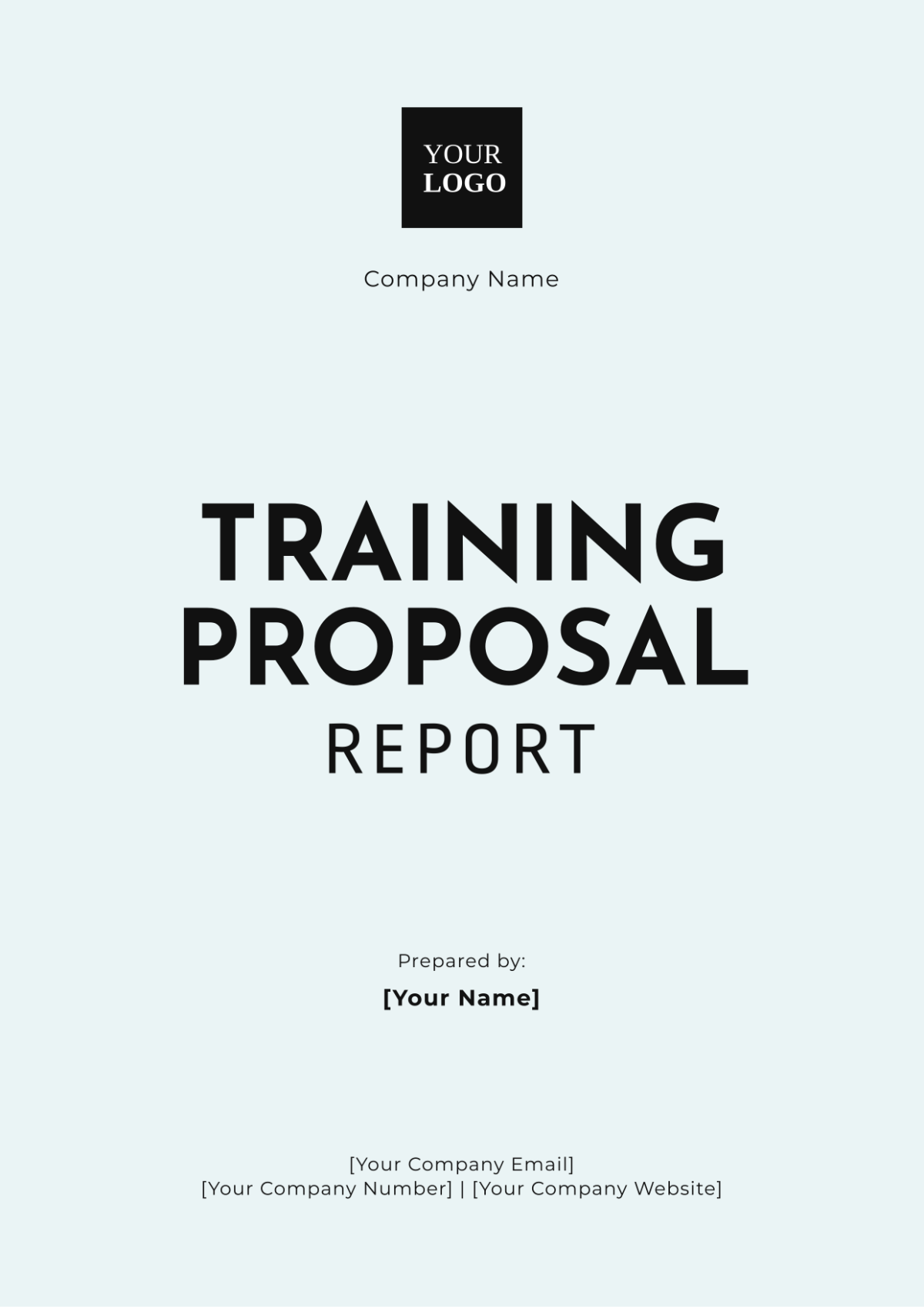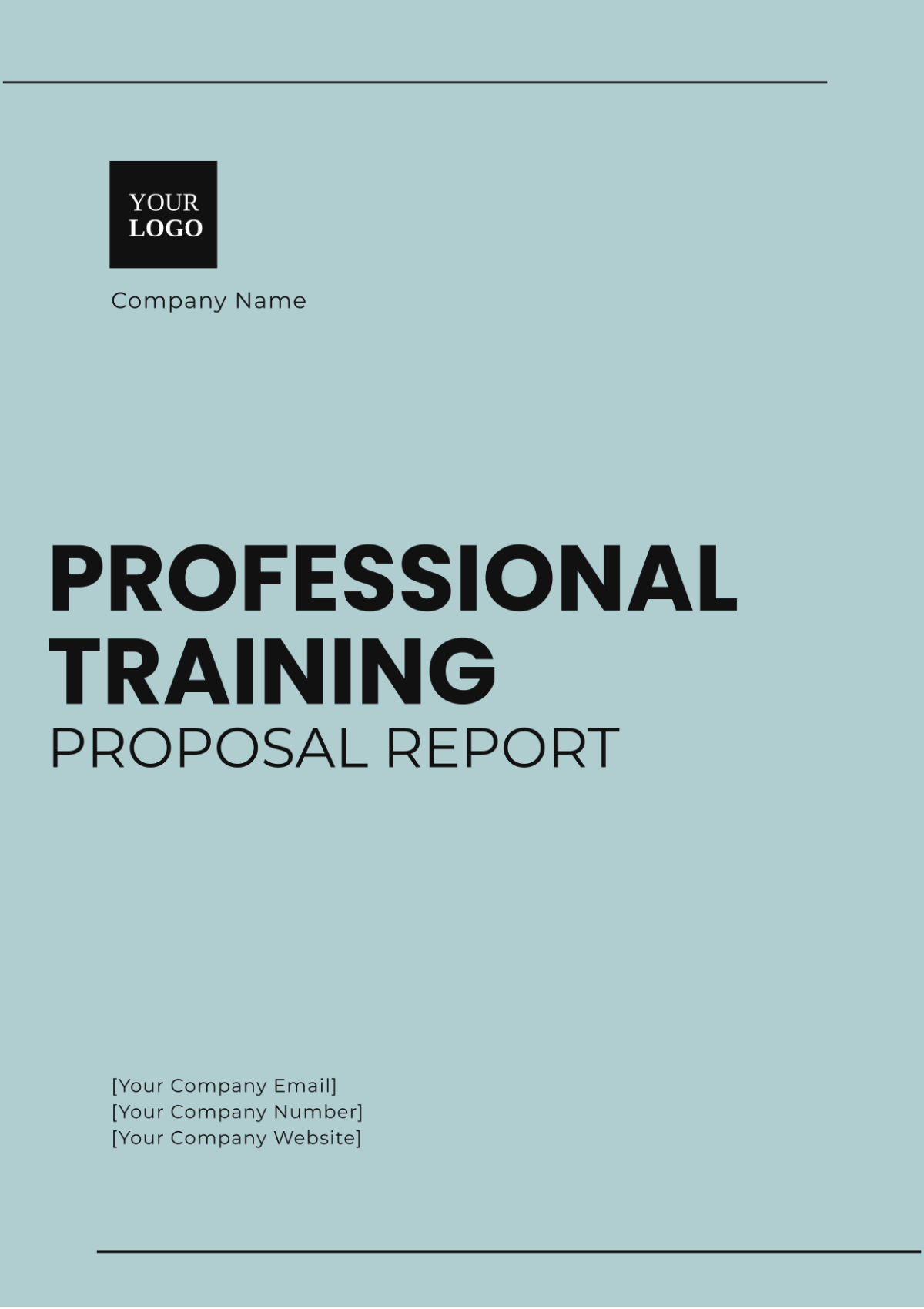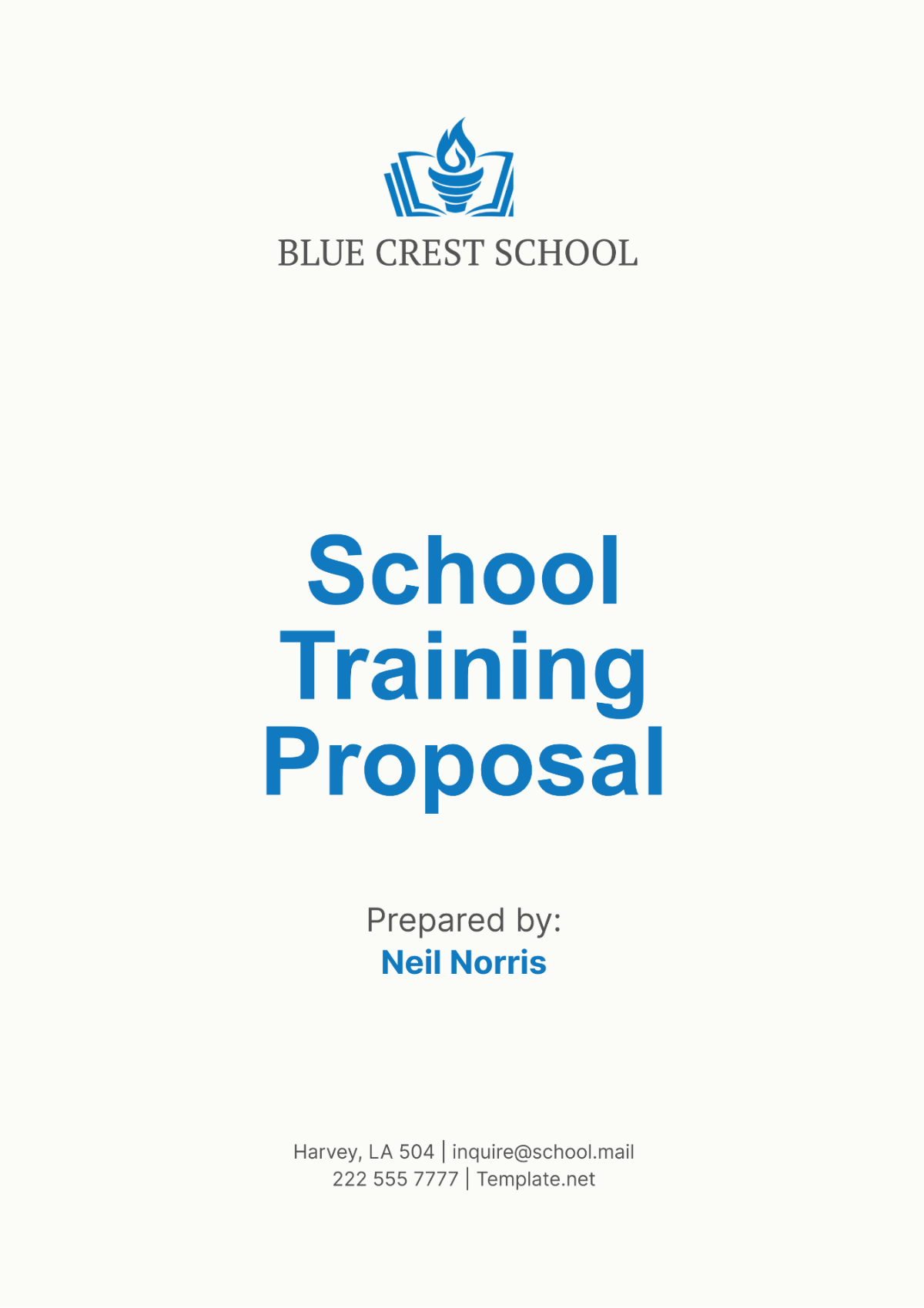Blended Learning Training Proposal
Prepared by: [Your Name]
Company: [Your Company Name]
Date: [Date]
I. Introduction
The purpose of this proposal is to design and implement a Blended Learning Training Program that integrates both traditional face-to-face instructional methods with digital learning tools, aiming to enhance educational outcomes. The blended approach offers flexibility and personalizes the learning experience to accommodate diverse learning styles and needs. This proposal outlines the rationale, methodology, implementation plan, evaluation framework, and budget considerations necessary to achieve an effective and efficient blended learning curriculum.
By merging innovative digital strategies with proven educational practices, the proposed program will create a dynamic learning environment that fosters active participation, critical thinking, and improved performance among students.
II. Background
A. Understanding Blended Learning
Blended learning combines the best aspects of online and traditional schooling. It leverages digital tools to provide a rich learning experience while maintaining the supportive and interactive nature of in-person instruction. By employing this approach, educational institutions can address varying learning paces and preferences, enhancing student engagement and retention.
This hybrid model can include a variety of instructional methods such as interactive videos, online discussions, and collaborative projects, allowing educators to reach students in multiple ways. Studies have shown that students who participate in blended learning environments often exhibit higher levels of engagement and achievement compared to those in traditional settings.
B. Rationale for Implementation
The introduction of blended learning is driven by the demand for more adaptable and inclusive educational strategies. The integration of technology in education caters to a diverse student body, promotes self-paced learning, and allows educators to focus on interactive sessions in class, resulting in improved educational outcomes and learner satisfaction.
Additionally, the ongoing evolution of educational technology necessitates the adaptation of teaching methods to remain relevant and effective. As industries increasingly rely on digital skills, preparing students for the future job market becomes paramount. By implementing a blended learning program, educational institutions can better equip students with essential skills in technology, collaboration, and self-regulation.
III. Methodology
A. Learning Framework
The training program will utilize a 70/30 framework, where 70% of content will be delivered through digital modules, and 30% will be facilitated in person. This model encourages students to engage with digital content at their own pace while participating in facilitated discussions and hands-on activities during face-to-face sessions.
The digital modules will encompass various multimedia formats, including video lectures, podcasts, and interactive quizzes, ensuring that students can access content in a way that suits their learning preferences. In-person sessions will be designed to complement online learning by focusing on real-world applications, problem-solving, and collaborative work.
B. Digital Learning Platforms
Multiple digital platforms will be employed, including Learning Management Systems (LMS), video conferencing tools, and interactive online resources. These platforms will provide a seamless user experience, tracking progress, and facilitating communication between learners and instructors.
The LMS will host all course materials, enabling easy access to resources and assignments, while video conferencing tools will support live discussions and virtual classrooms. Furthermore, tools such as discussion boards and collaborative documents will foster peer interaction, enhancing the sense of community among students.
C. Face-to-Face Components
In-person sessions will focus on applying knowledge, conducting collaborative projects, and engaging in discussions to enhance understanding and critical thinking. These sessions will be flexible to adapt to the needs and progress of students.
Instructors will be encouraged to utilize interactive teaching strategies such as group activities, case studies, and simulations to deepen understanding. Regular feedback sessions will also be integrated into the curriculum to ensure that students receive timely support and guidance.
IV. Implementation Plan
A. Phased Rollout
This program will be implemented in three phases to ensure a smooth transition and adaptation:
Phase 1: Pilot Program – Designed for small groups to test and refine the blended learning model. Feedback collected during this phase will be crucial for making necessary adjustments.
Phase 2: Initial Rollout – Expansion to select courses or departments, incorporating feedback from the pilot. This phase will also involve targeted marketing efforts to raise awareness among students and faculty.
Phase 3: Full Implementation – Deployment across the institution with ongoing evaluation and adjustments. This phase will leverage lessons learned from previous phases to ensure a successful and scalable program.
B. Staff Training
Teacher training sessions will be organized to equip educators with the necessary skills and confidence in employing digital tools, designing blended modules, and facilitating interactive in-person sessions.
Workshops will cover topics such as effective use of the LMS, strategies for engaging students online, and methods for assessing blended learning outcomes. Continuous professional development opportunities will be made available to support educators in adapting to evolving technologies.
C. Student Orientation
Students will undergo an orientation program focusing on familiarizing them with using digital platforms, self-directed learning techniques, and the expectations of a blended learning environment.
This orientation will include tutorials on navigating the LMS, understanding the course structure, and setting personal learning goals. Furthermore, resources such as peer mentoring and online support will be provided to ensure students feel confident and prepared to engage in a blended learning experience.
V. Evaluation
A. Continuous Assessment
Regular assessments will be incorporated into the program to gauge student progress, engagement, and satisfaction. Feedback will be actively sought from both students and instructors to refine and enhance the program continually.
In addition to formal assessments, informal check-ins will be conducted to identify potential challenges early on. This proactive approach will allow for timely interventions and improvements.
B. Learning Outcomes
The evaluation process will include measuring key performance indicators such as student achievement, retention rates, and overall satisfaction to determine the success of the blended learning implementation.
The evaluation metrics will include:
Evaluation Metric | Method | Frequency |
|---|---|---|
Student Achievement | Standardized Tests | Every Semester |
Engagement Levels | Surveys and Participation Tracking | Quarterly |
Program Satisfaction | Feedback Forms and Interviews | Bi-annual |
This structured evaluation framework will ensure that the blended learning program remains responsive to the needs of students and educators.
VI. Budget
An estimated budget has been outlined to cover the costs of resources, training, and implementation:
Budget Item | Estimated Cost |
|---|---|
Digital Platforms and Licenses | $50,000 |
Teacher Training and Development | $30,000 |
Student Orientation Programs | $10,000 |
Evaluation and Continuous Improvement | $15,000 |
Contingency | $15,000 |
Total Estimated Budget | $120,000 |
The total estimated budget for the development and implementation of the Blended Learning Training Program is $120,000. This budget aims to ensure comprehensive support for both educators and students throughout the transition.
VII. Conclusion
The proposed Blended Learning Training Program is structured to revolutionize the educational approach by integrating digital learning with face-to-face instruction. This holistic strategy aims to enhance student engagement, accommodate various learning styles, and improve educational outcomes.
By employing a carefully crafted implementation and evaluation plan, this program is poised to provide a sustainable, flexible, and effective educational model. Ultimately, the blended learning initiative will not only meet the diverse needs of today’s learners but also prepare them for success in an increasingly digital world.
